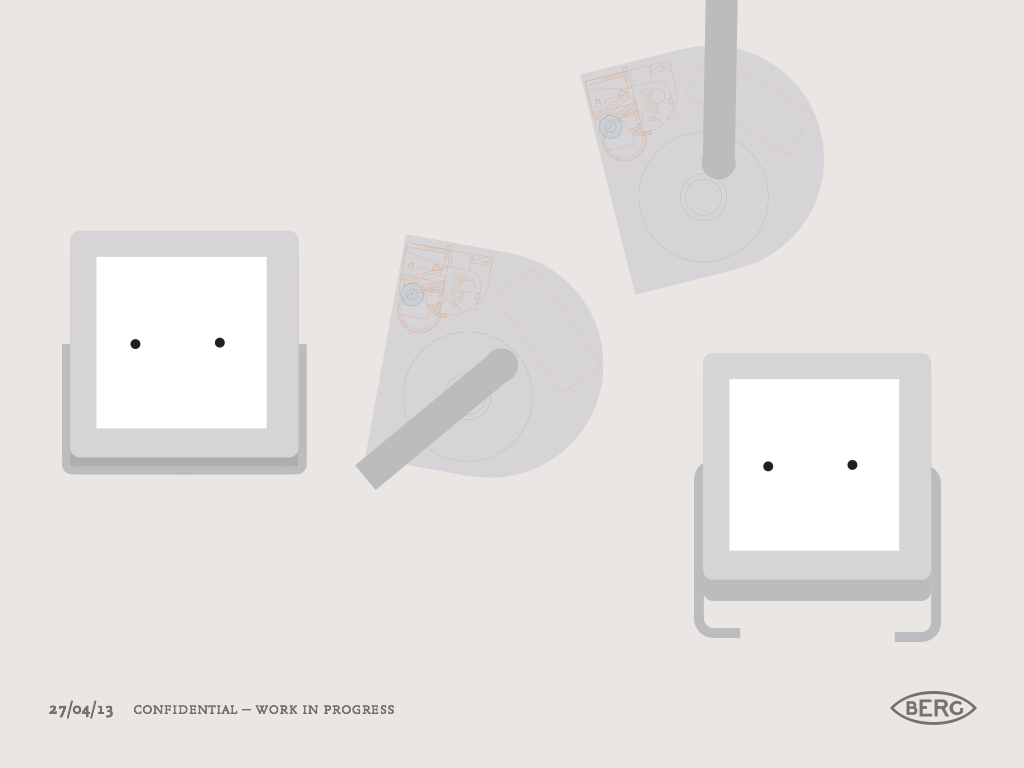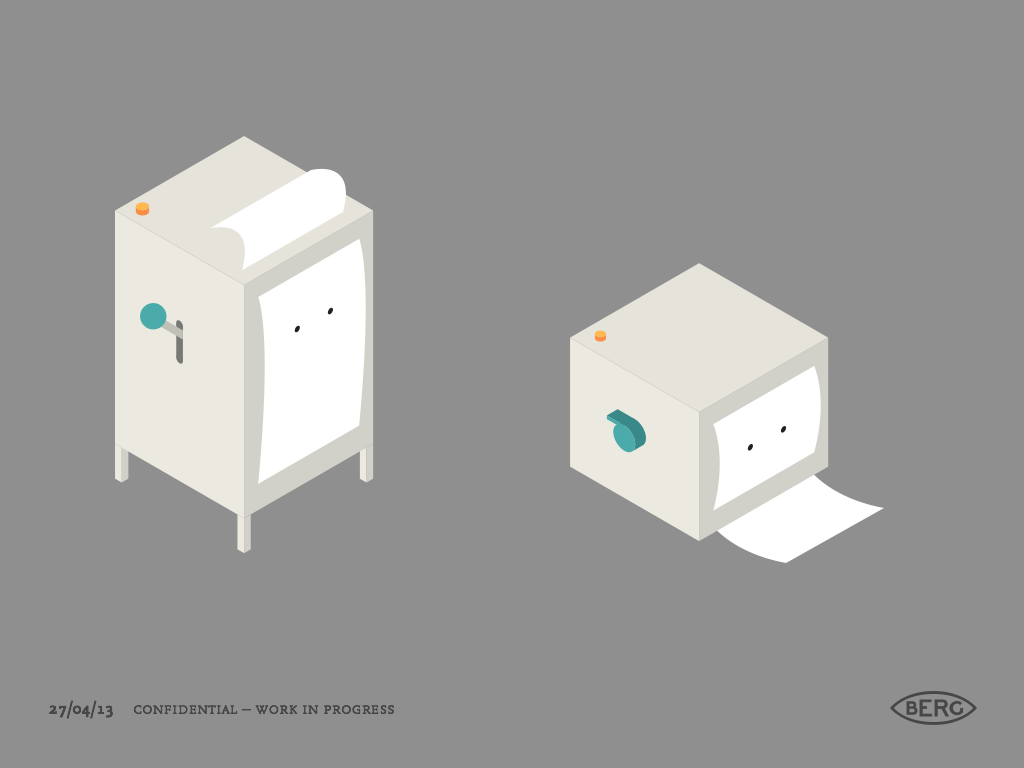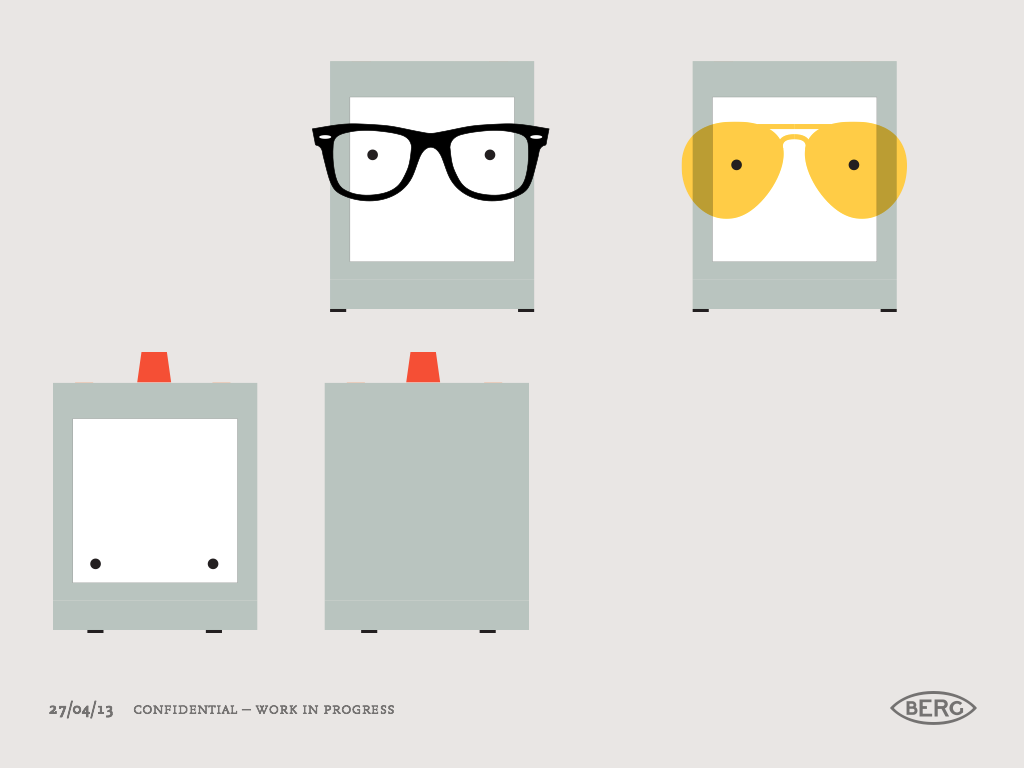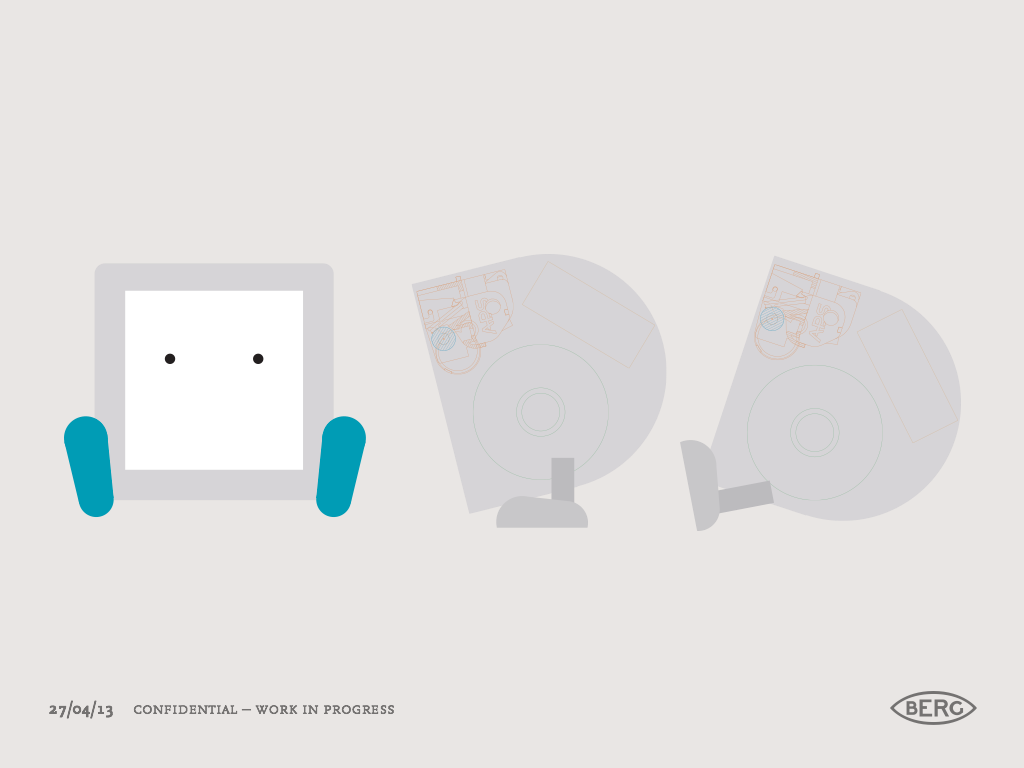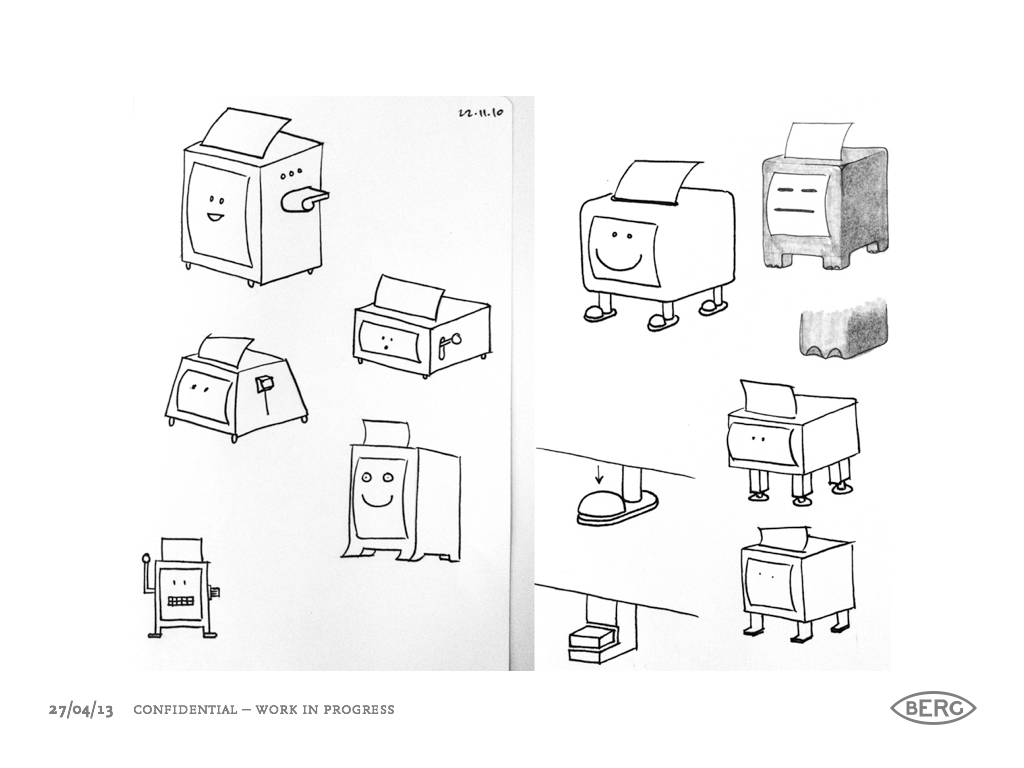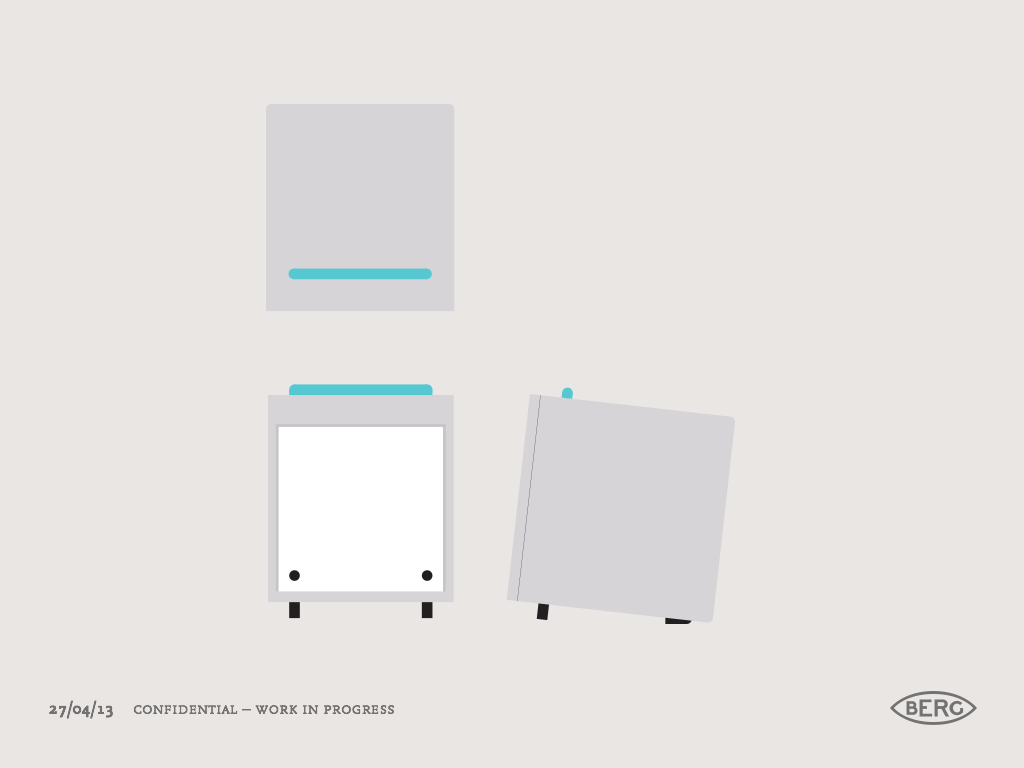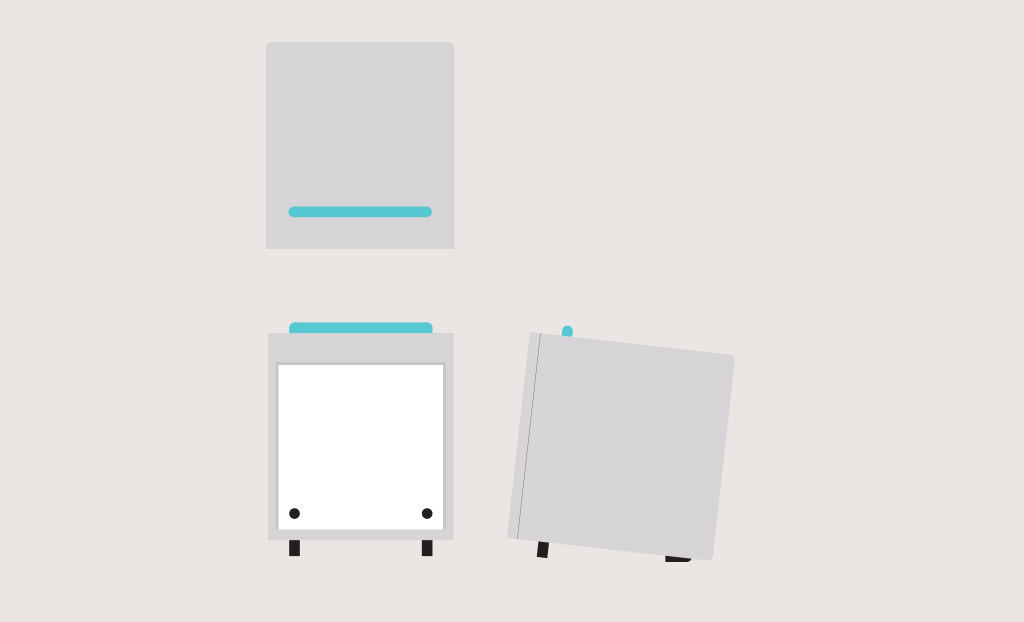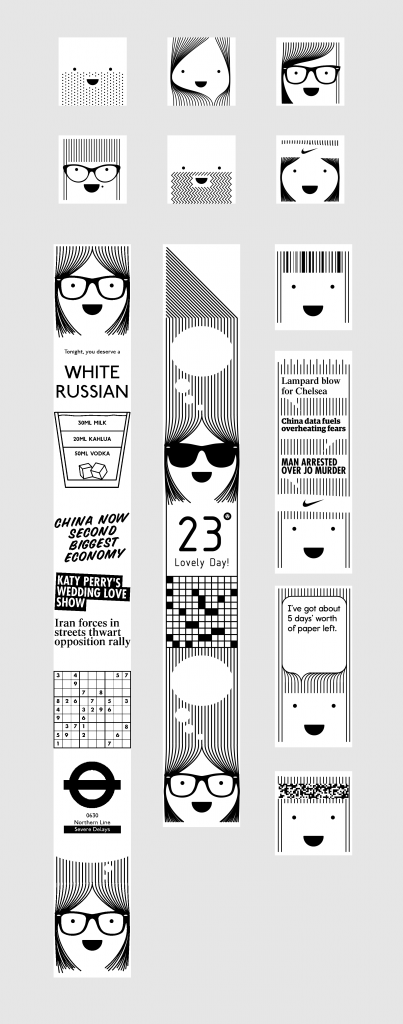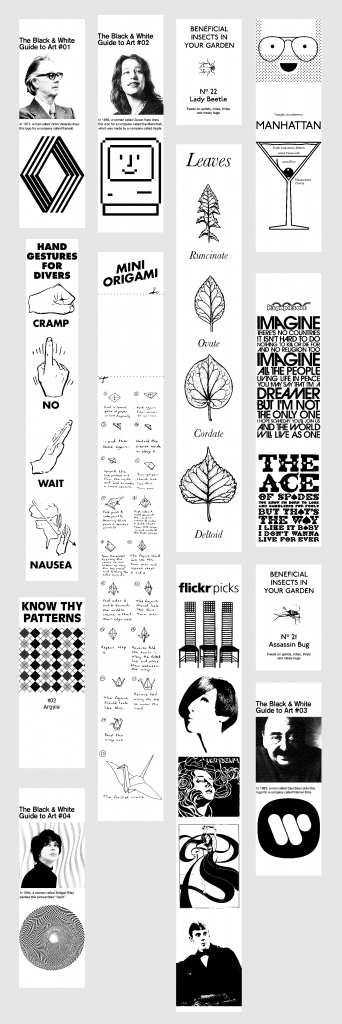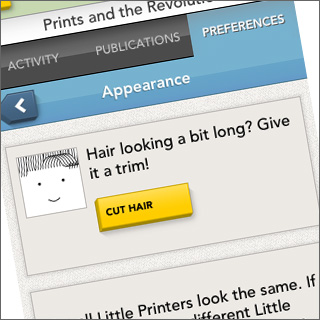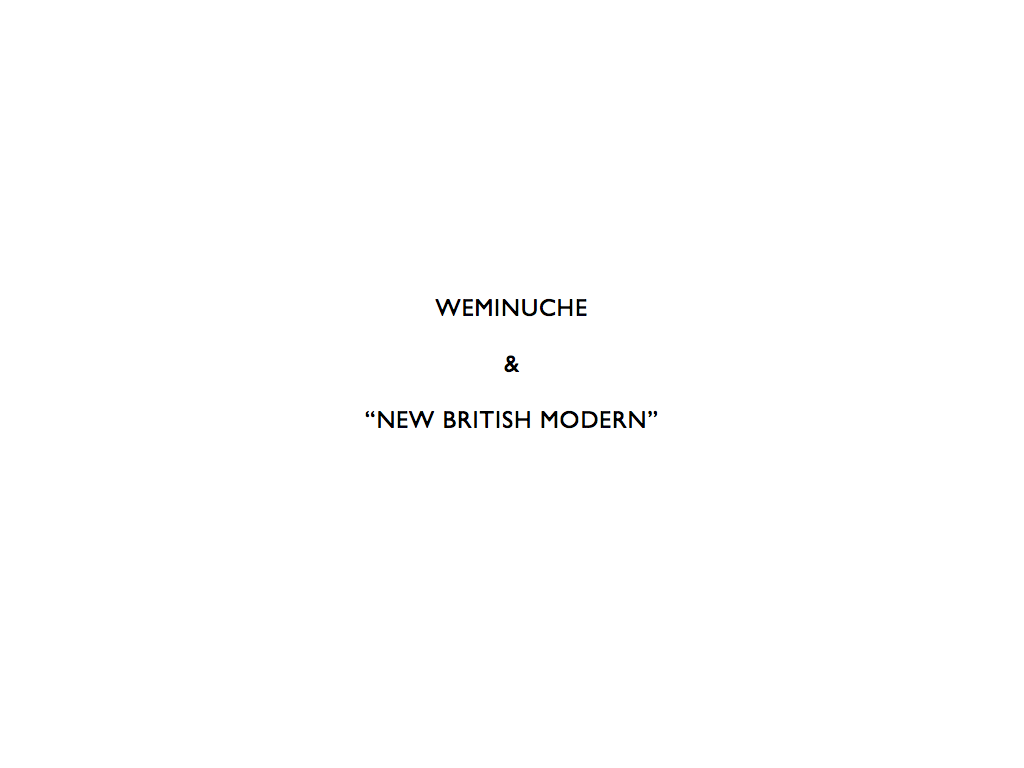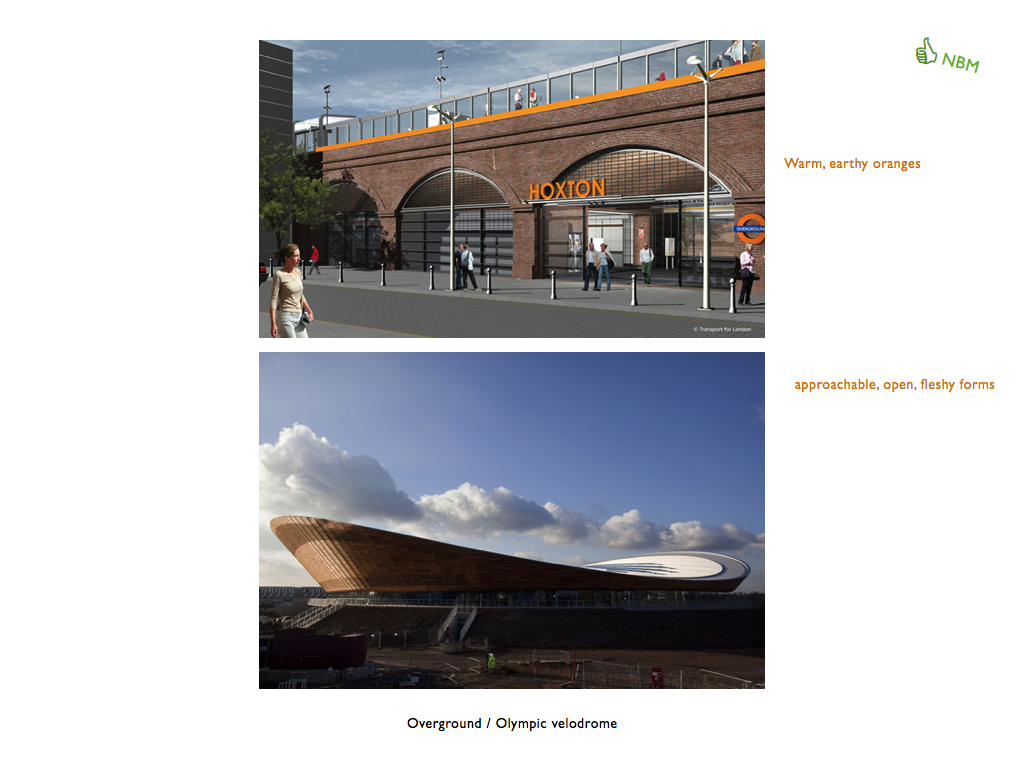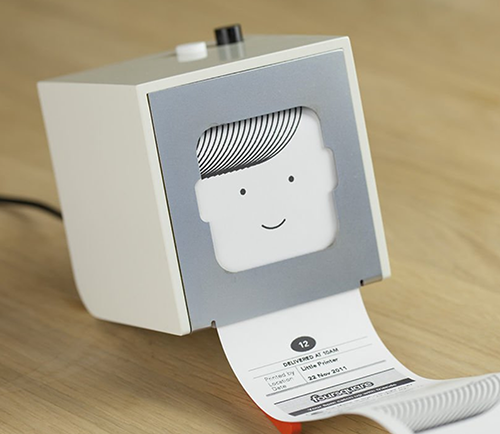I worked on early, exploratory designs for BERG’s Little Printer. I was involved in defining the aesthetic character and choreography of the product, looking at everything from interactions via the web app, the graphic language of the face and publications, early sketches informing the industrial design, through to identity and branding.
I made a lot of sketch paper models and drawings to investigate what form Little Printer should take, and how it might live in our lives. Would it be in the kitchen? On your bedside table? In the living room? Much of the focus of these sketches was on how to establish character as a whole, integrating the face and body.
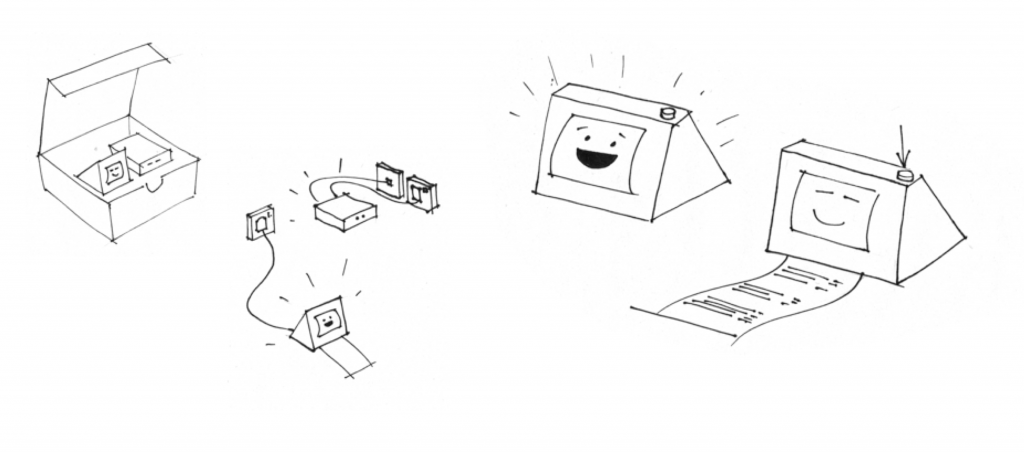
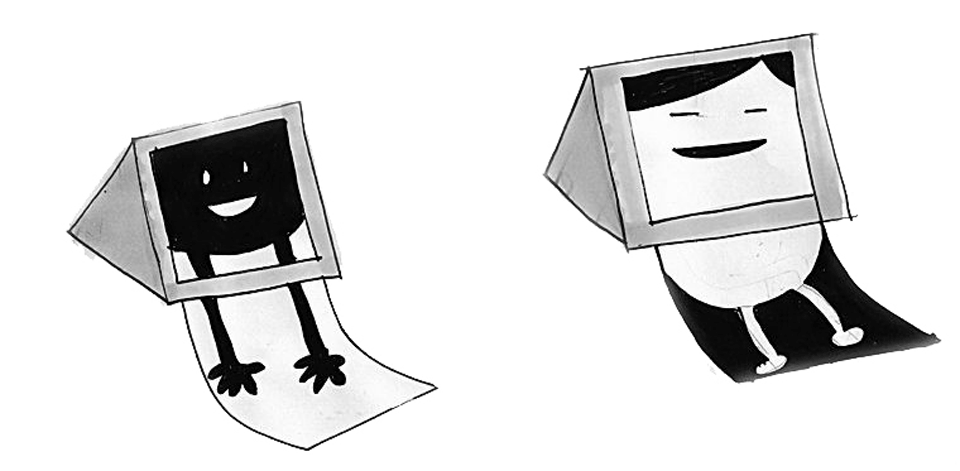
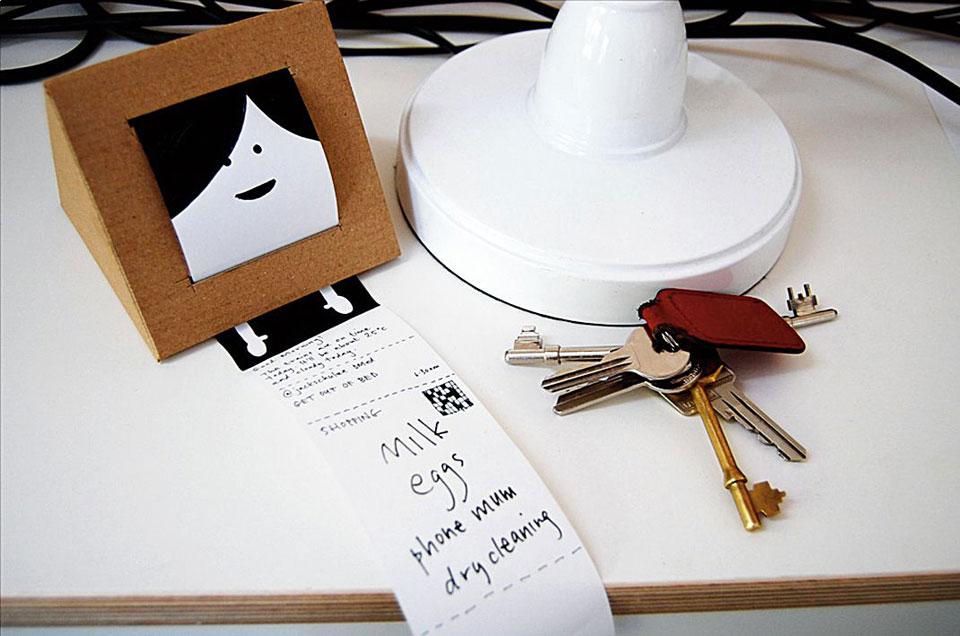
As I remember, Jack Schulze (one of the BERG head honchos) and I continually debated whether Little Printer should feel more like a toy or an appliance. We both had very differing views, and there were many weeks (months maybe?) of sketching, exploration and discussion. These are some sketches I was working on before we engaged Luckybite to finalize the industrial design.
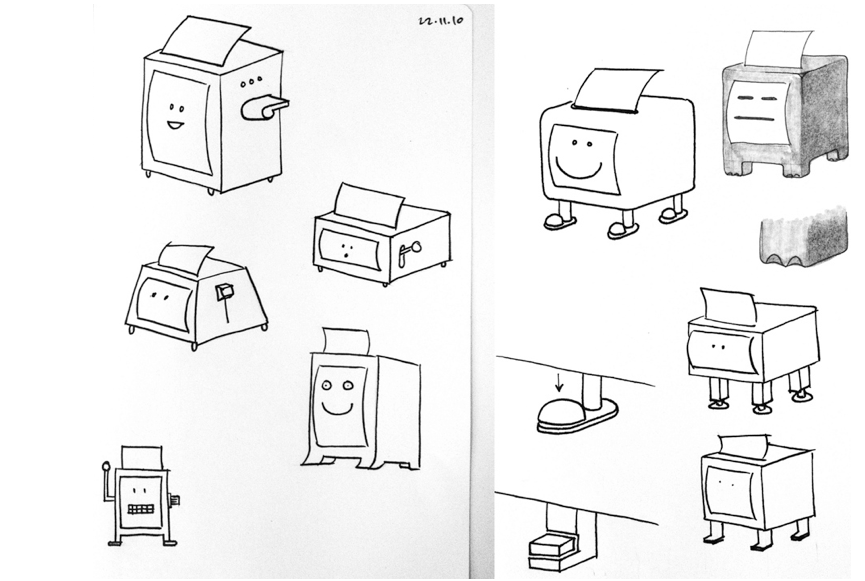
Sketches exploring how paper flow might work…
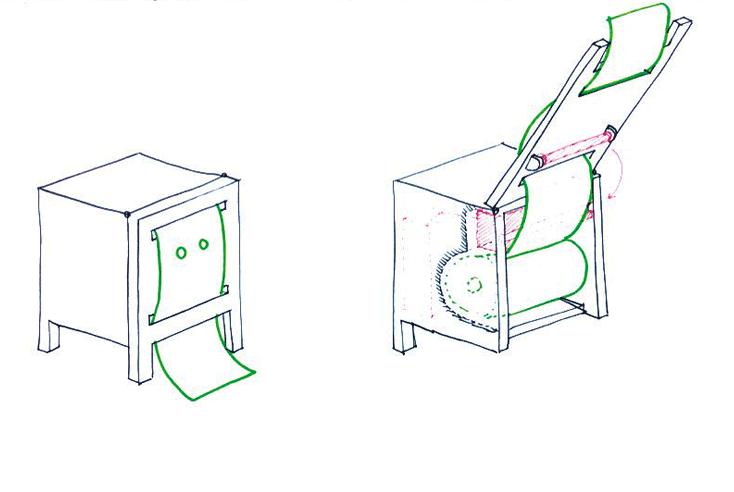
…and some crude 3D modelling using some of the proper parts.
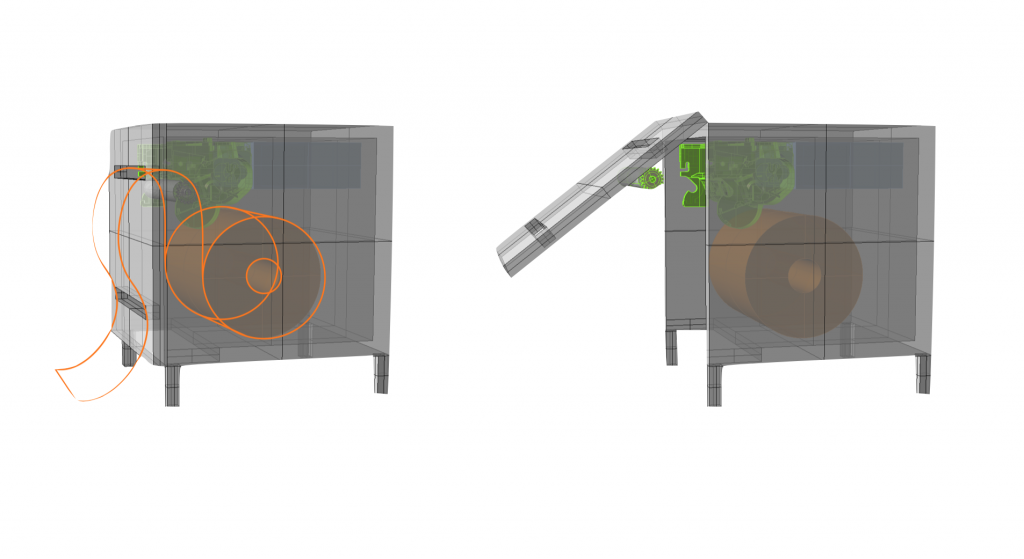
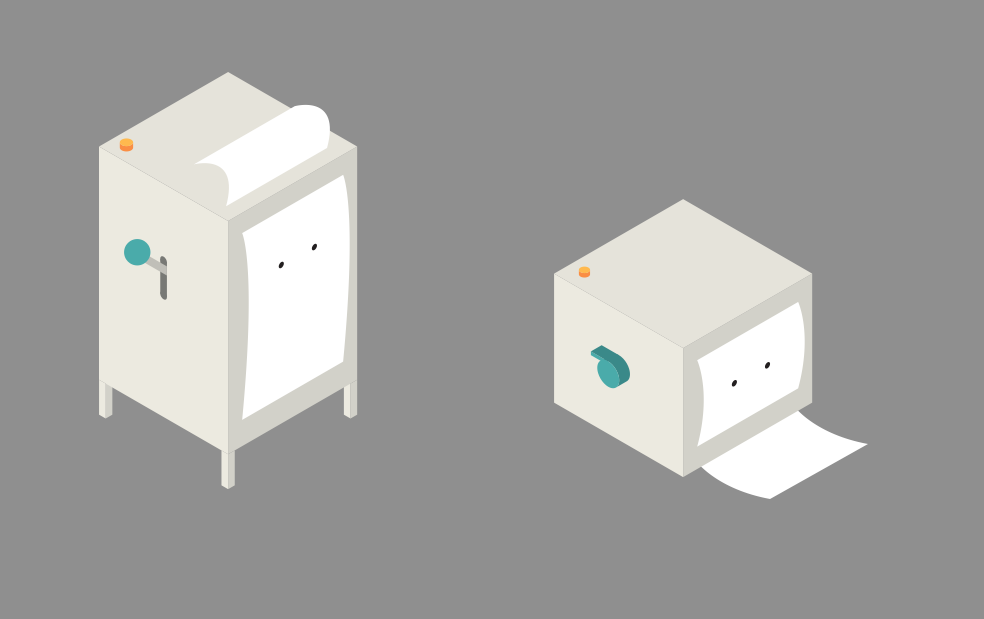
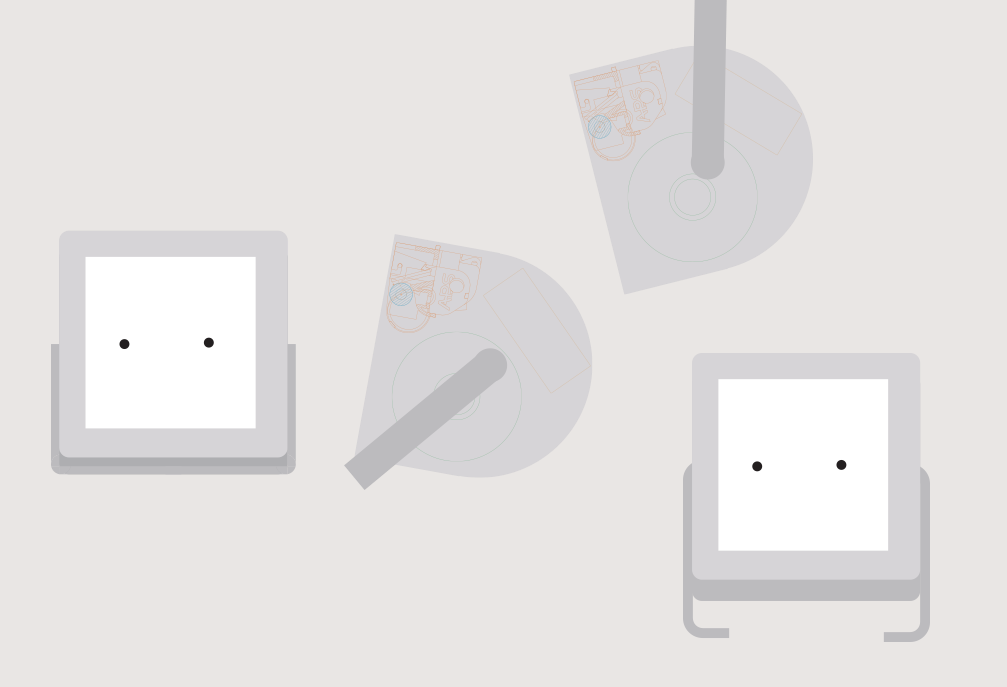
Early ideas for physical peripherals, like perspex glasses, or little hats.
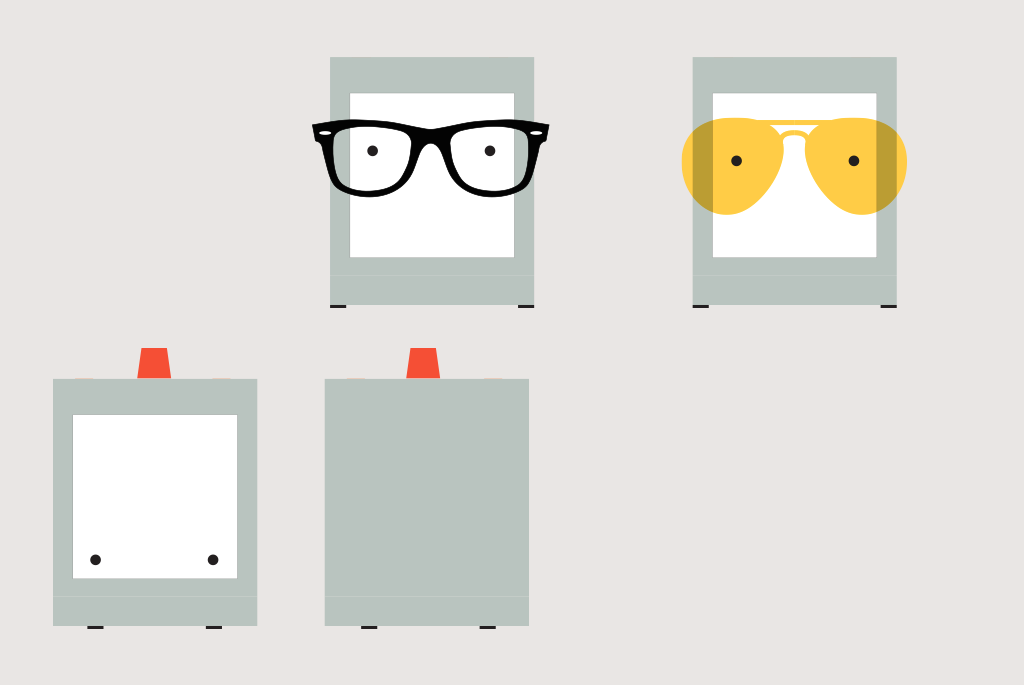
This was a key sketch – I had imagined little rubber soles on feet for added traction. I remember this idea in particular came up a lot when we initially spoke to Luckybite, who riffed on it, evolving it into the little legs you see in the final product.
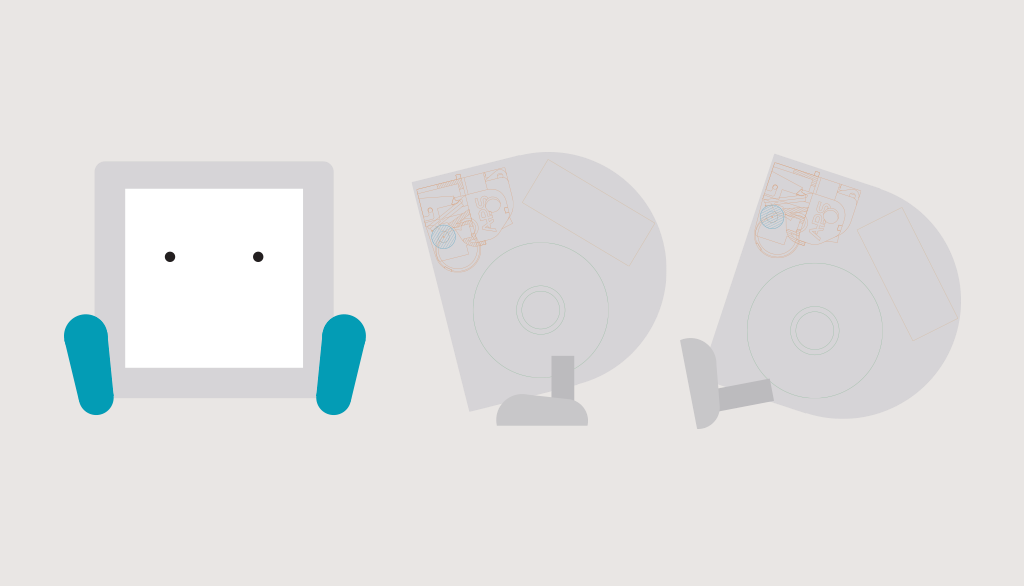
I put together the initial drawings defining how Little Printer’s face might look. I worked closely with Andy Huntington, who made the first rigs for making test prints. These are some of the first experiments I drew. The line art style of the hair was initially driven by power consumption concerns – printing blocks of solid, consistent black was initially tricky – but after those limitations were largely solved by the team, the aesthetic stuck around, eventually becoming part of the shipping product.
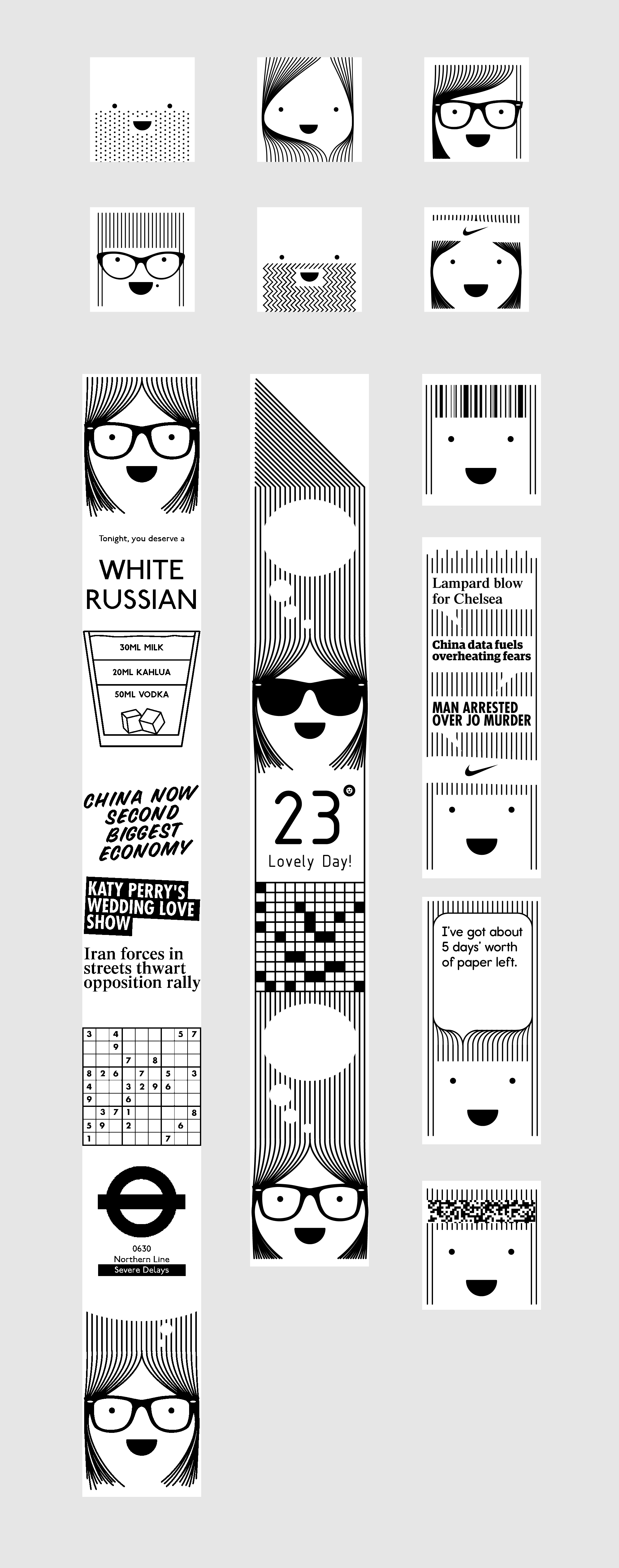
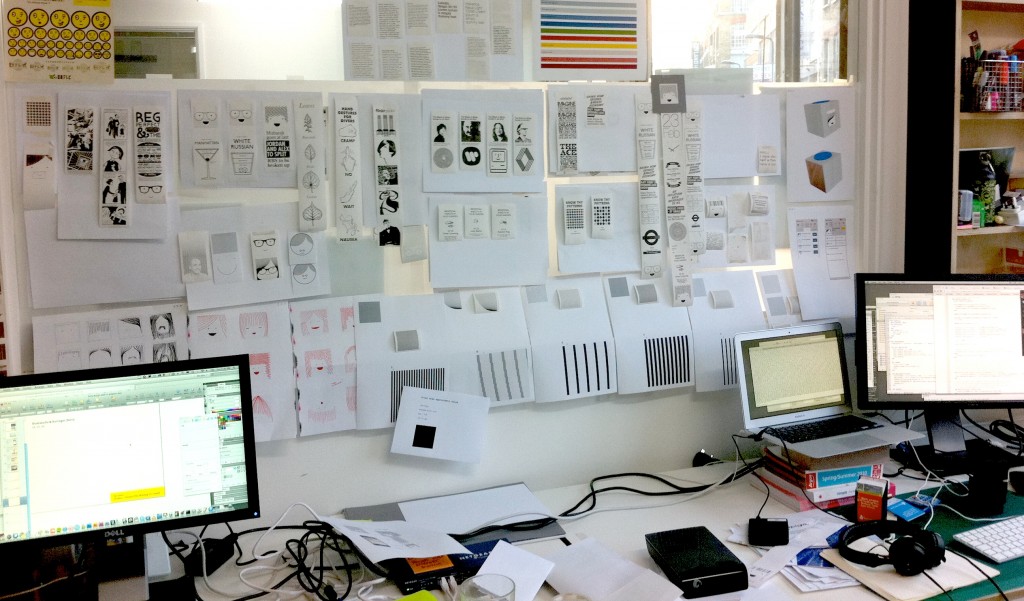
I was also tasked with thinking about what sort of things people might do with Little Printer. The idea of subscribing to feeds or publications floated around for ages, and our initial ideas were vaguely utilitarian – things like train time alerts; birthday reminders, crosswords and so on.
The more we batted ideas around, the more I began to think about what we could do that was unique to Little Printer. What could people do with it that they couldn’t just do with their phone? I ended up putting together a few thoughts on how it could be a platform for publishing – for things like tiny, collectible posters, comics, or other sorts of things you might want to stick on your fridge. These were the first explorations I did on what they might be.
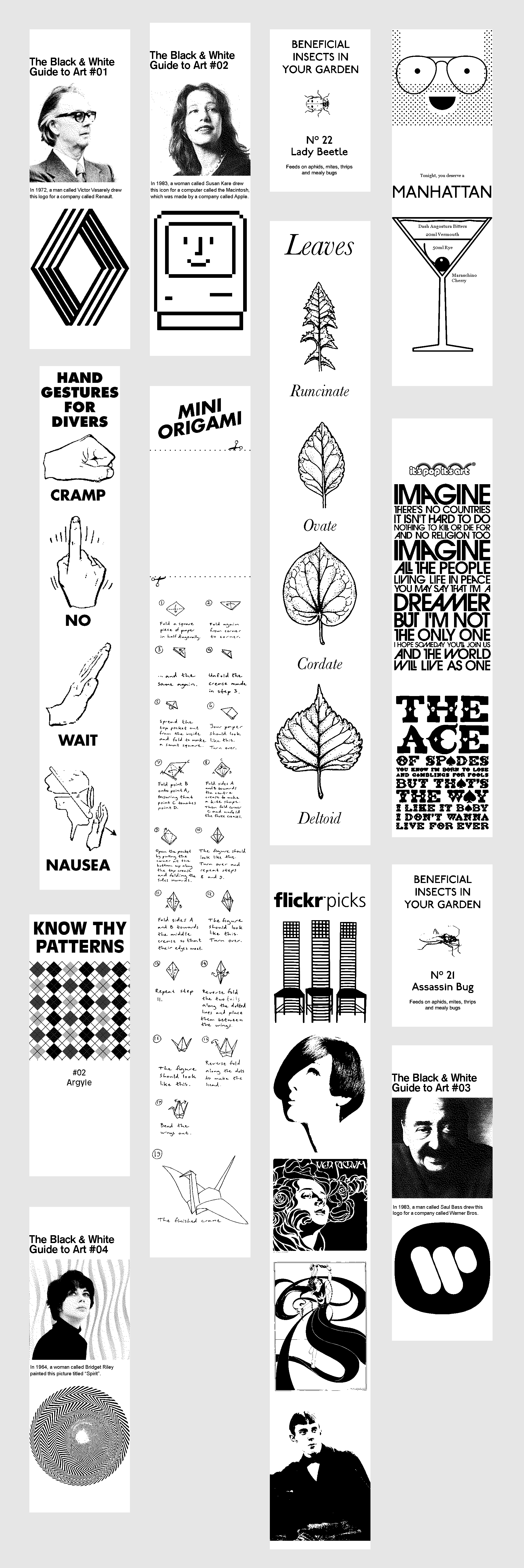
I put together the initial steps and early thinking on how people might interact with Little Printer via their phone. All the usual bread and butter UI/UX stuff: what the unboxing and setup should feel like; how to subscribe to publications; send messages and so on.
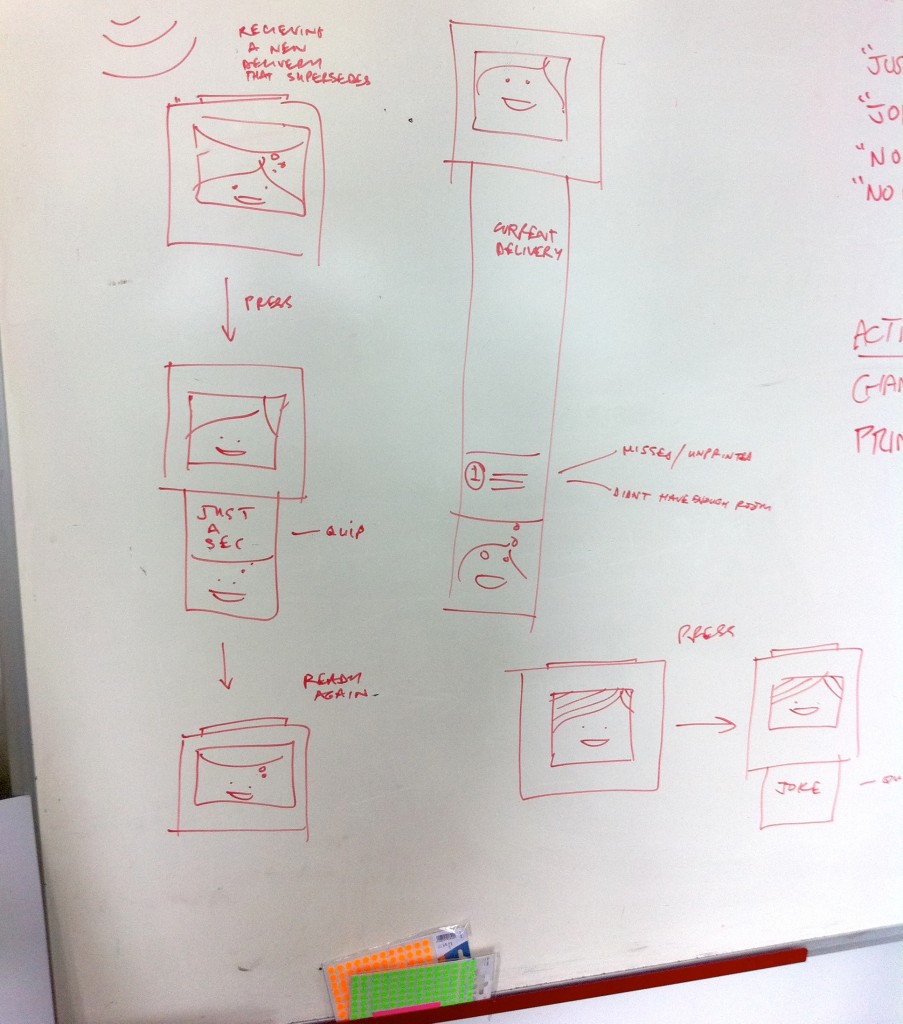
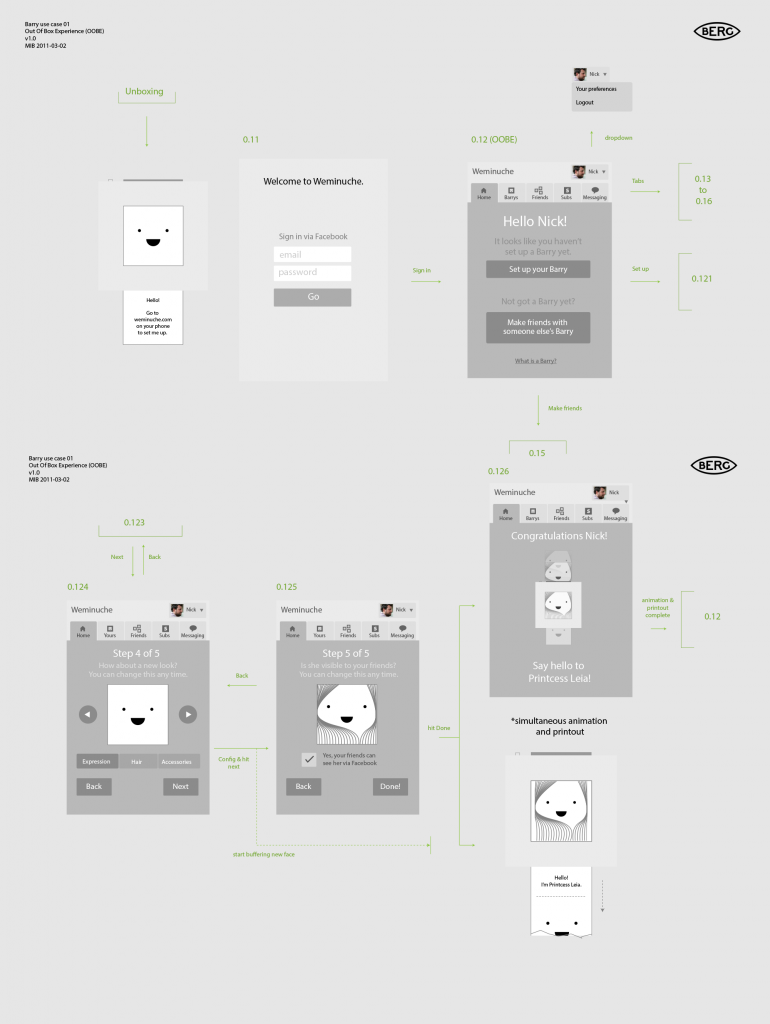
We did a lot of wireframing directly on receipt paper – this gave us a good sense of how much space printouts would take up.
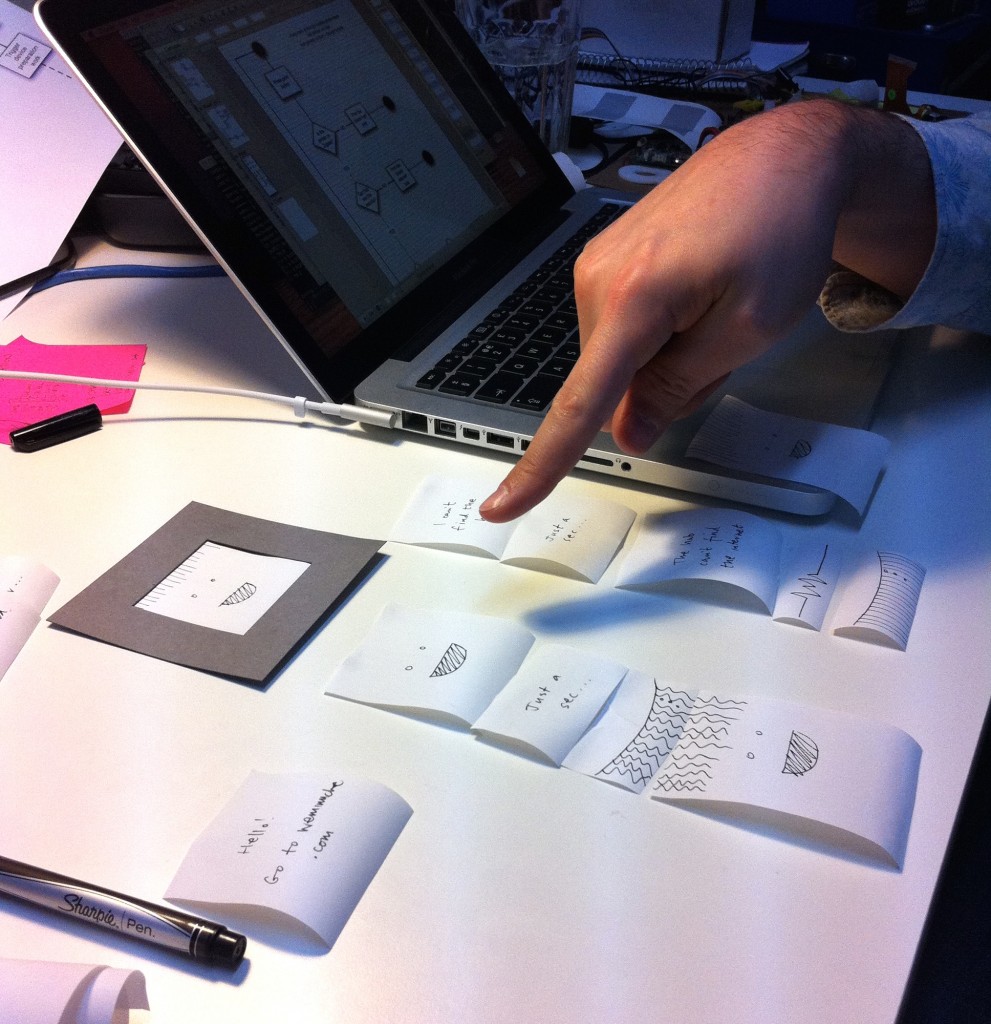
We decided that Little Printer’s hair would grow, and facial expressions change depending on how much it was being used, allowing for Tamagotchi-style interactions – again, trying to blur the lines of the product somewhere between appliance, toy and pet.
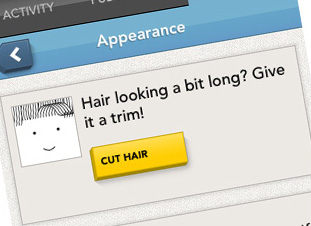
One of the more interesting mental models we played with at this point was that each Little Printer wouldn’t just be an appliance, deferring to its owner – it would be just as important an actor in the network as people are (hello Latour!).
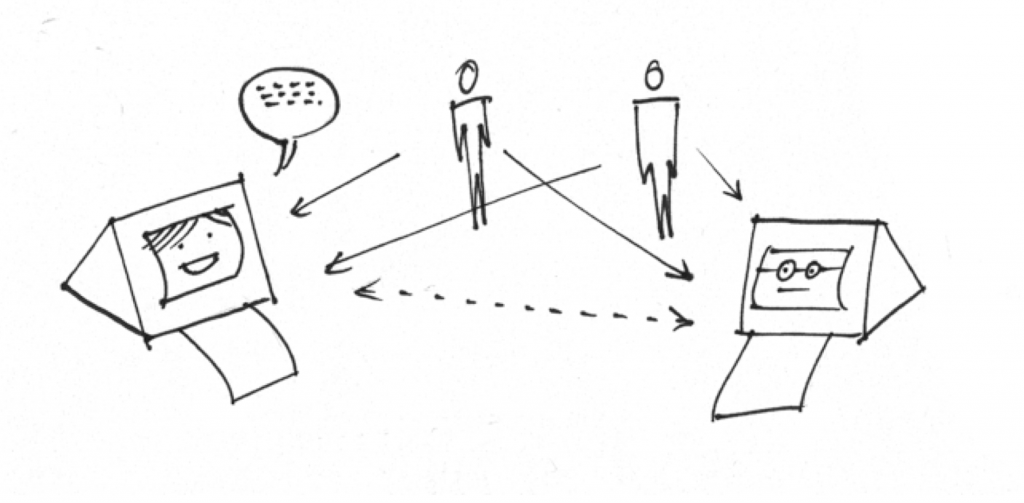
Maybe it could talk to other Little Printers without permission, spreading gossip, or getting jealous, or, say, finding a pair of glasses that it would suddenly wear.

It’s an fascinating area to think about as more and more connected products appear in our homes. Matt Webb (Berg’s co-founder and CEO) once told me that some Little Printer owners, upon discovering that their Little Printers had gone off and found a pair of glasses, felt somewhat uncomfortable – like they didn’t truly ‘own’ the Little Printer any more. Which bits of a connected product do I truly own? It’s a new, strange, difficult thing to design for.
As we thought about what Little Printer should be, I began collecting references and thoughts in a scrapbook, just to help us record conversations and articulate our thoughts better. Dan Hill’s Domus article on Little Printer describes it better than I can, and makes it sound much grander than it actually was:
“It’s a document called “NEW BRITISH MODERN”, fleshing out the aesthetic foundations for Little Printer, and very directly sketching out the product as an outcome of Britishness. Not in a “James Bond and the Queen in a helicopter” kind of way, but more subtly, with colour palettes, forms, conditions. As a document, it’s partly just the flotsam from a design process but it’s also an extraordinary act of curation, almost the DNA of what would be a great exhibition. It’s images and movies peppered with little notes-to-self like “calm radii, human forms but industrial processes, little tapers, warm earthy oranges, geometric but not cold …”, annotating a roll-call of reference points, drawing freely from the last century, and which if not all strictly British in provenance, certainly are in influence. Some of it predictable, some of it unlikely, all of it poetically accreting to build a highly consistent yet rich identity.”
Thanks Dan! Anyway, here are some bits from it.
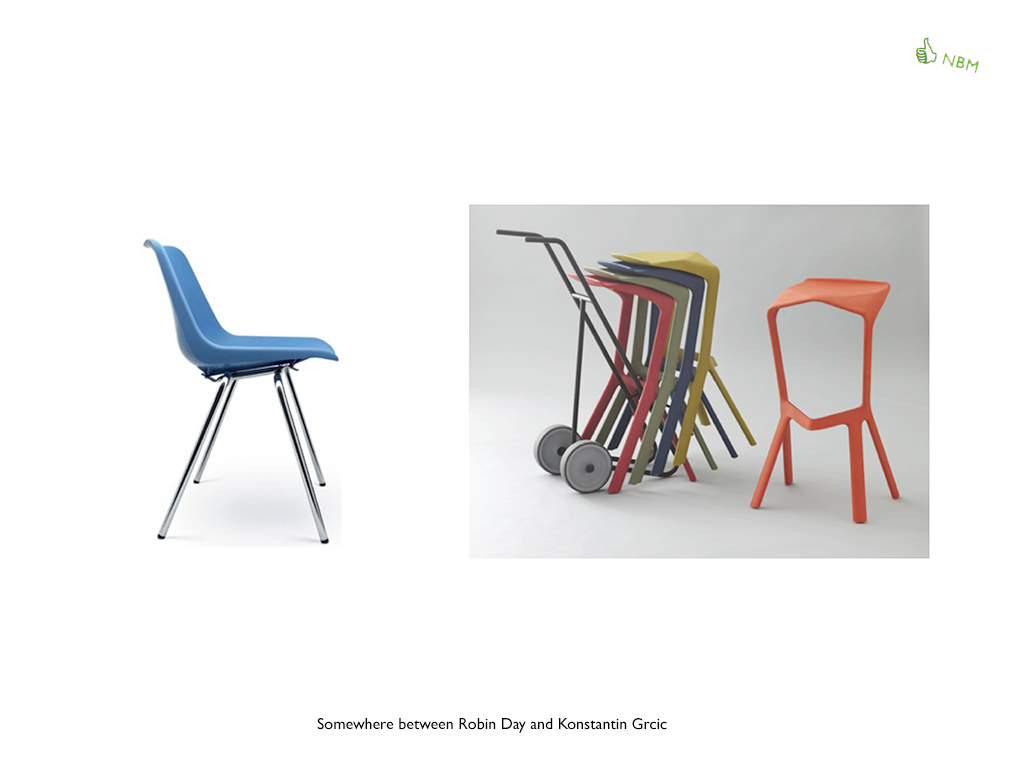
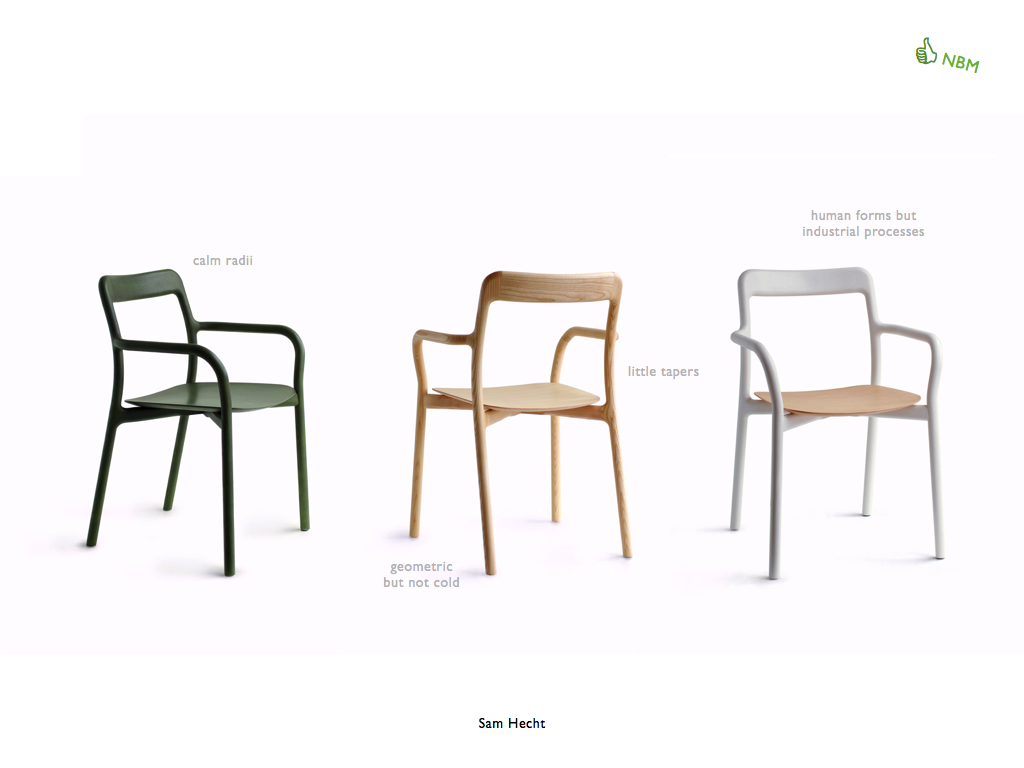
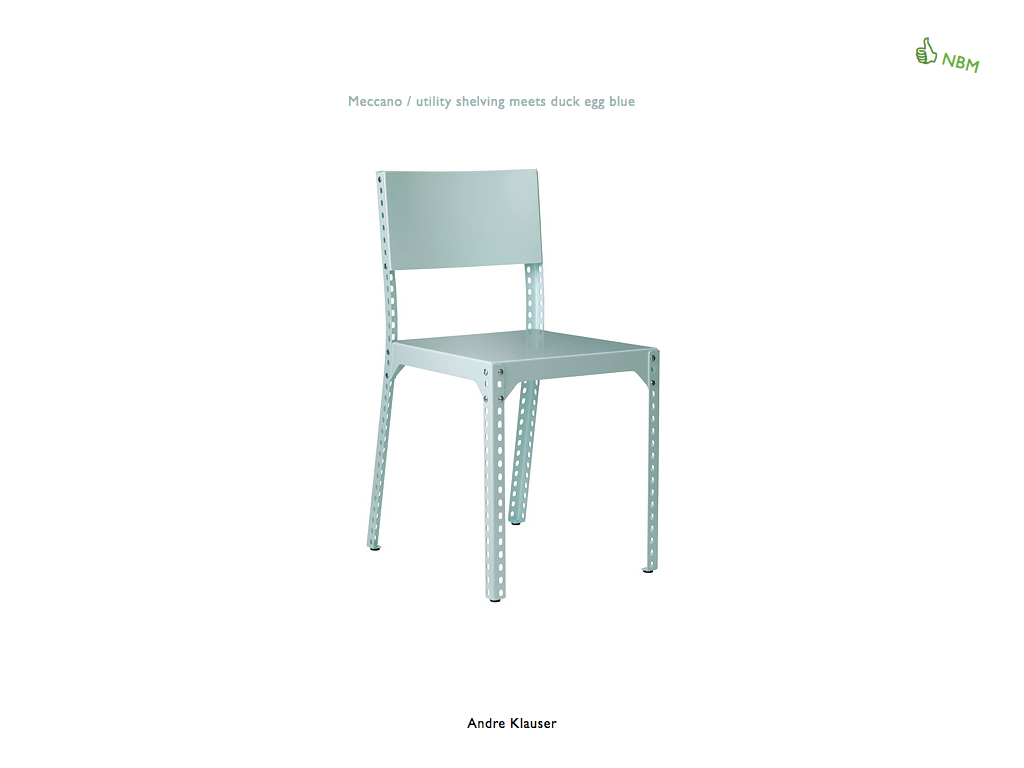
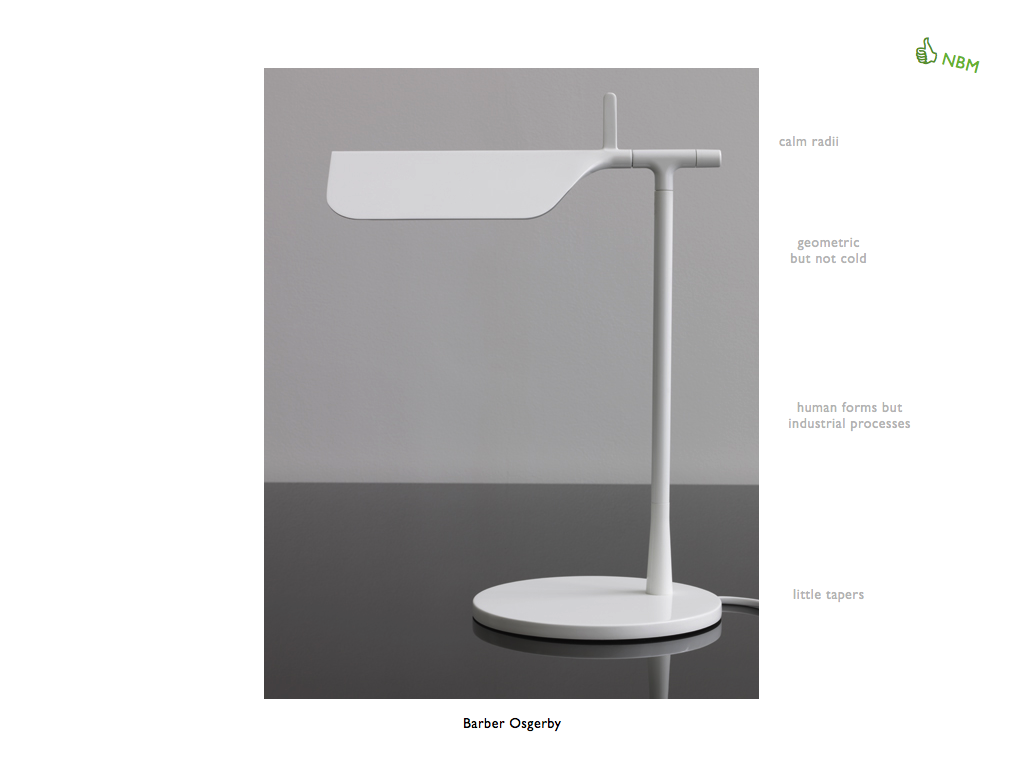
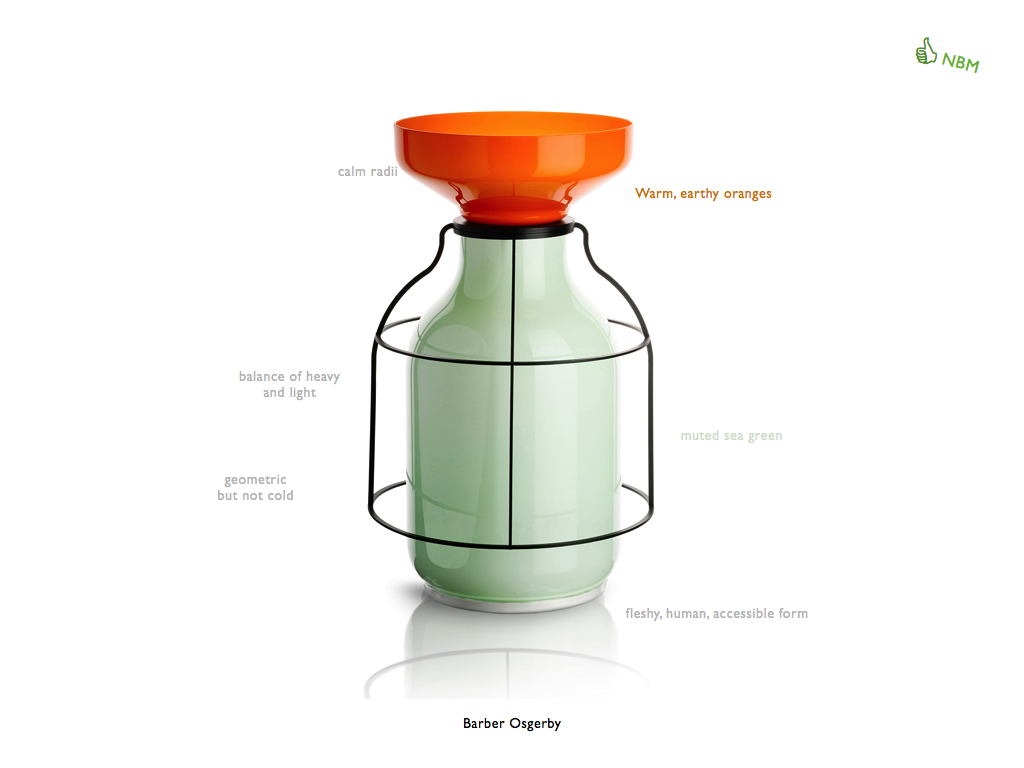
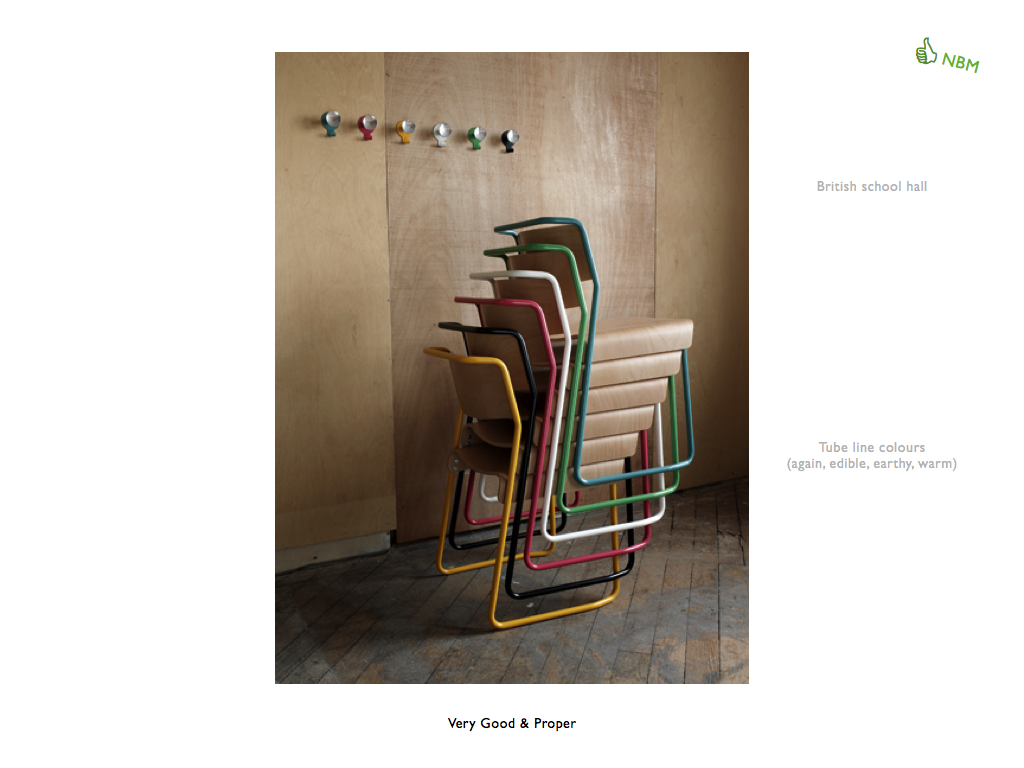
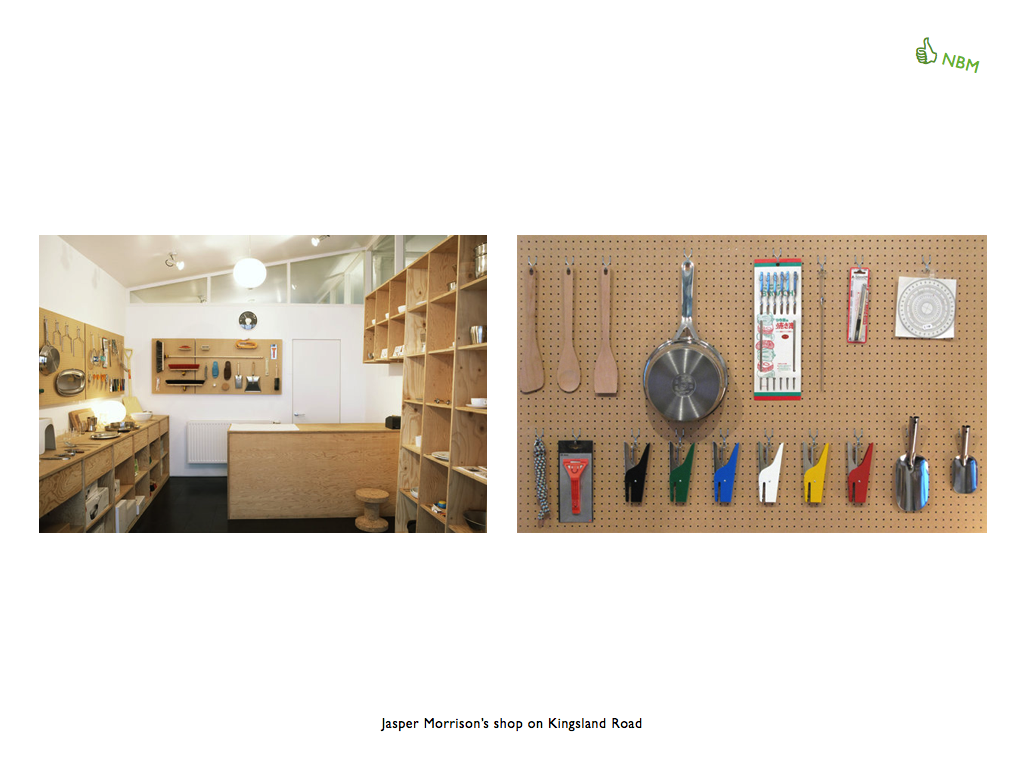
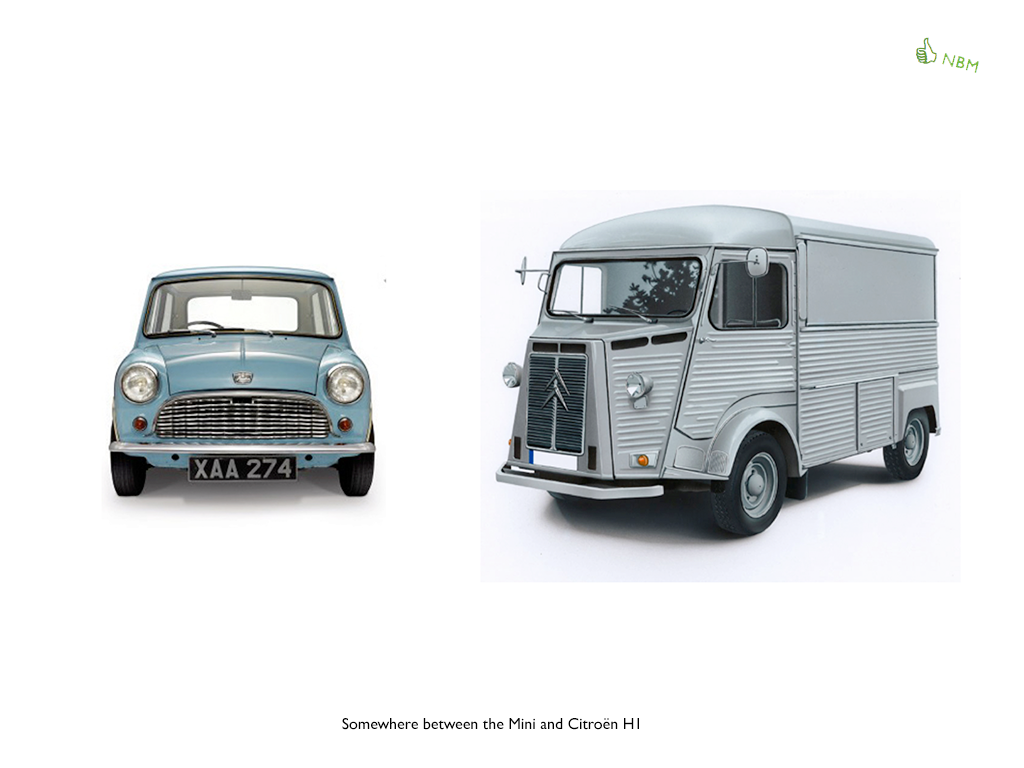

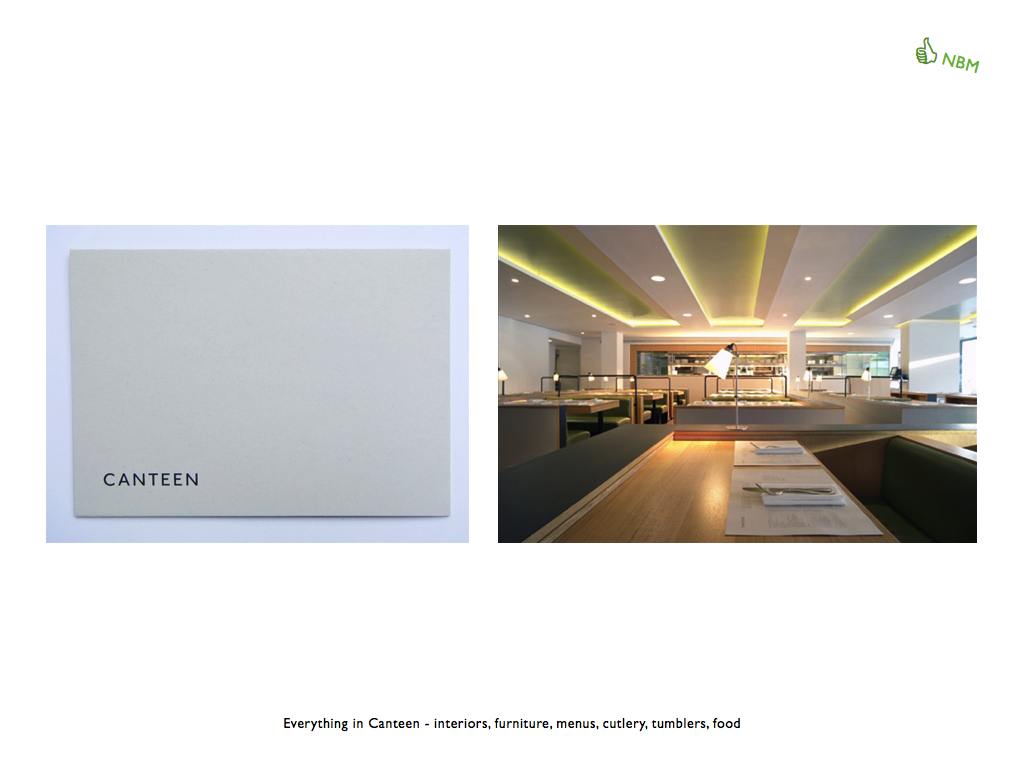
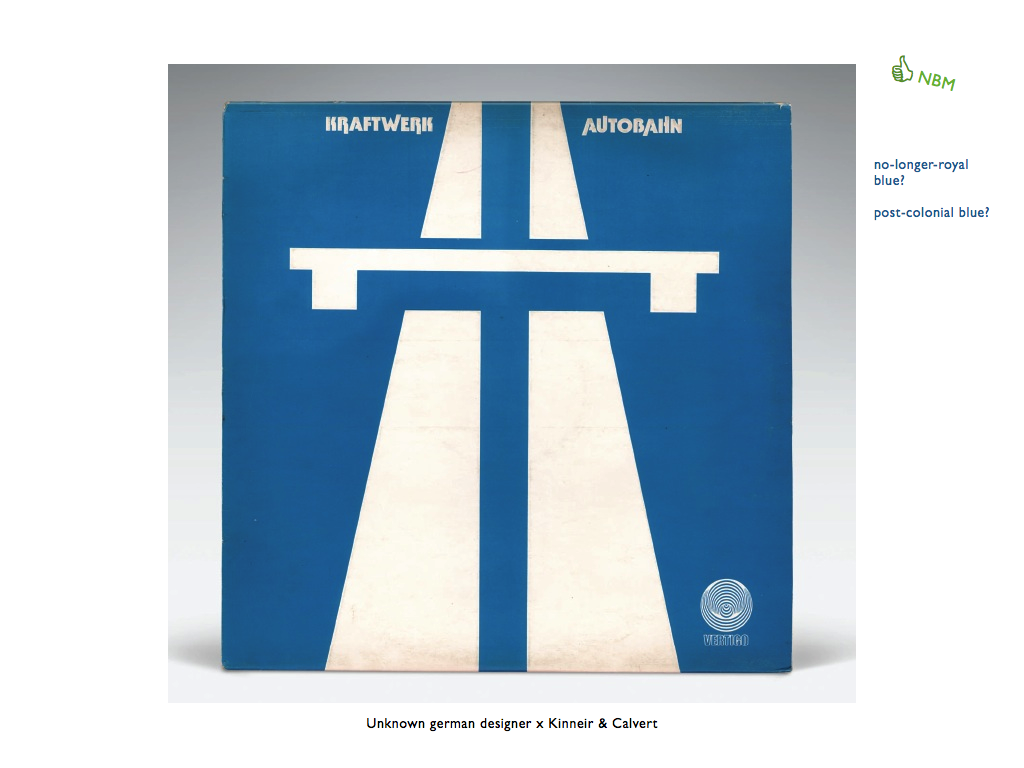
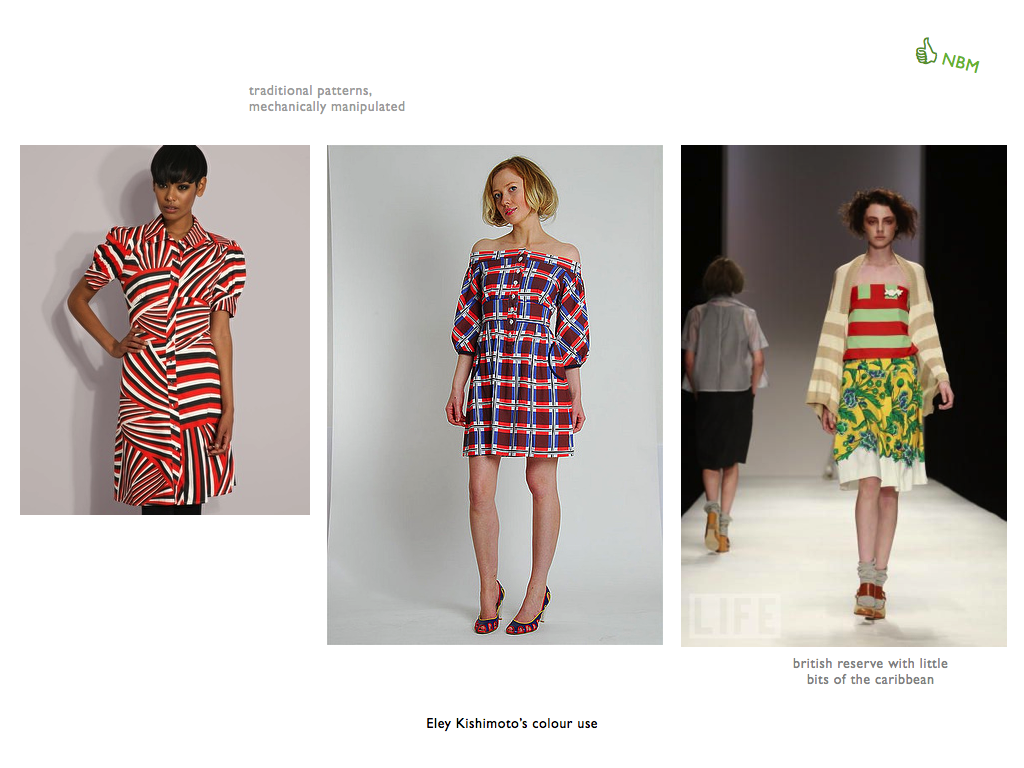

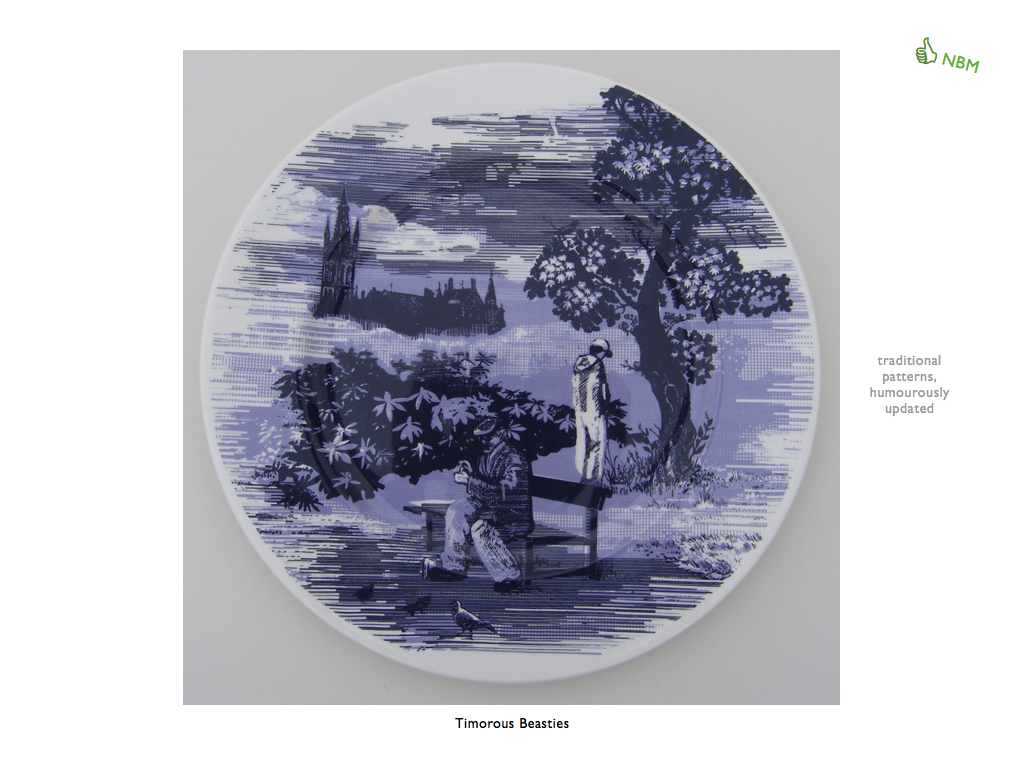
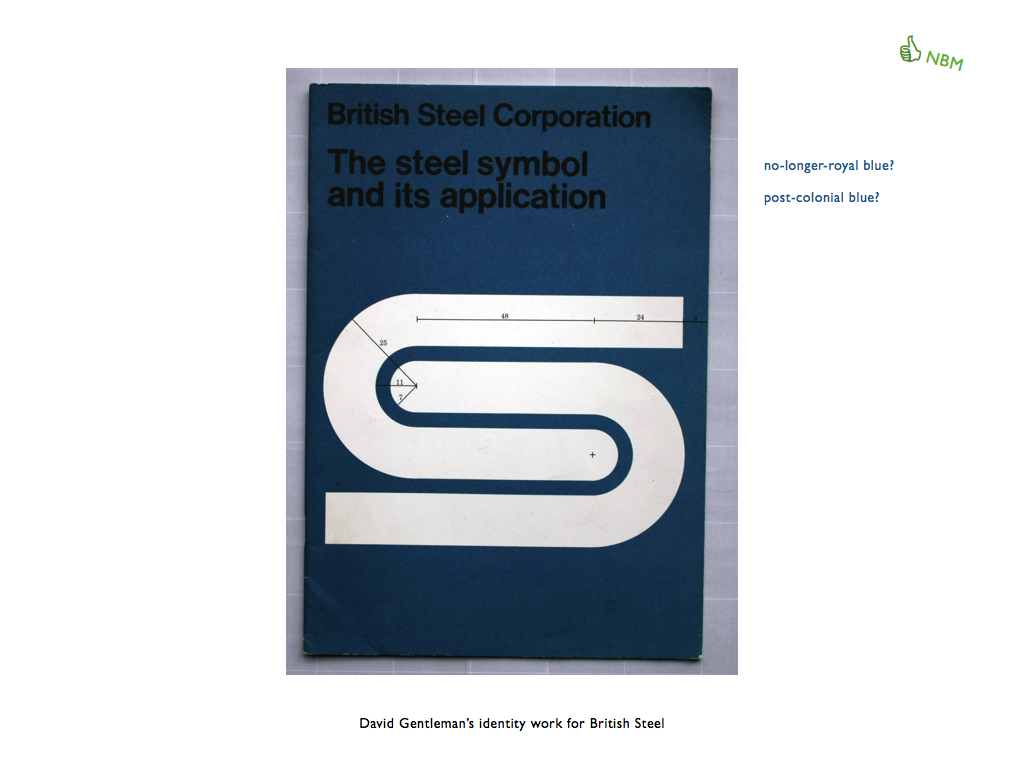
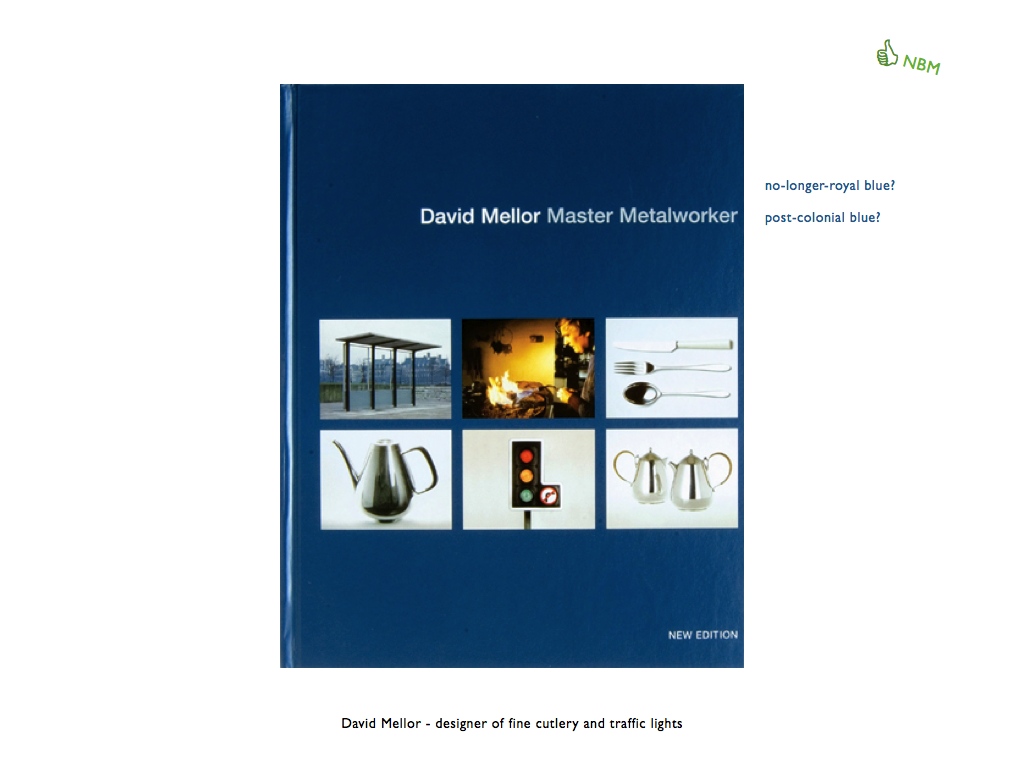
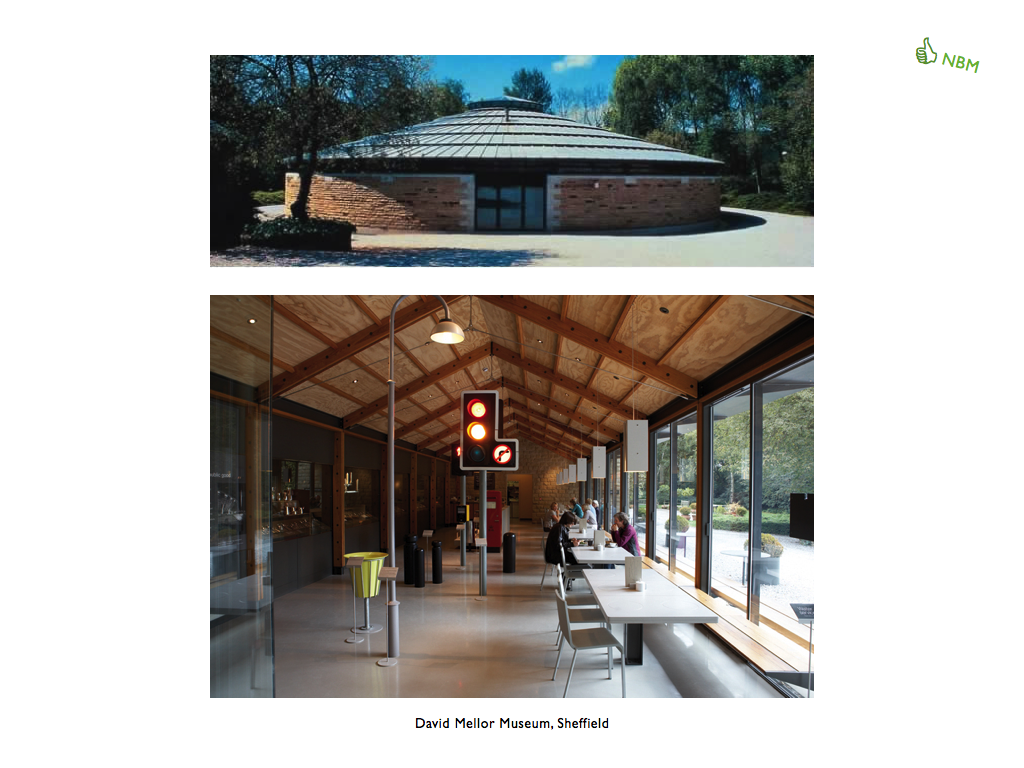
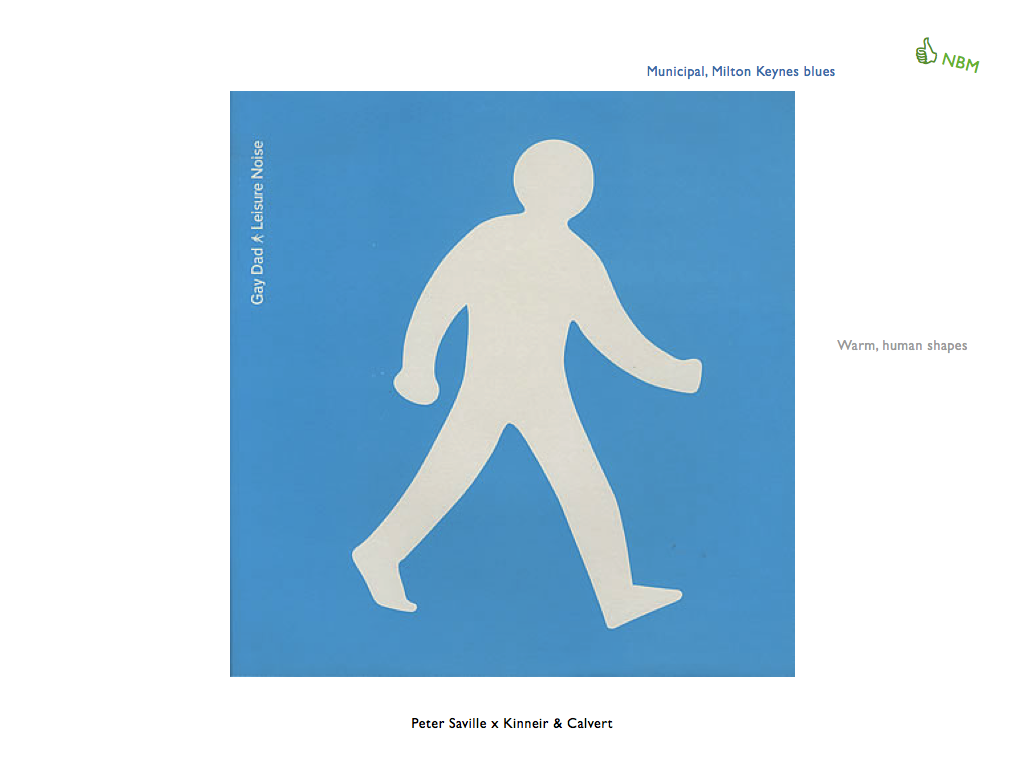
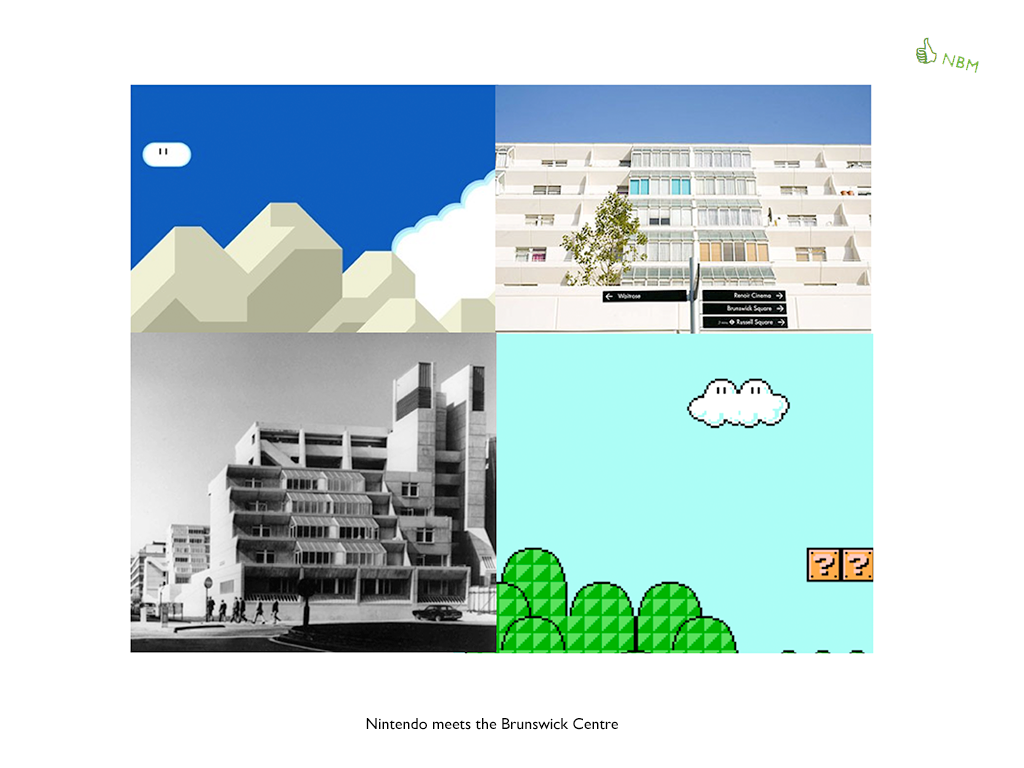
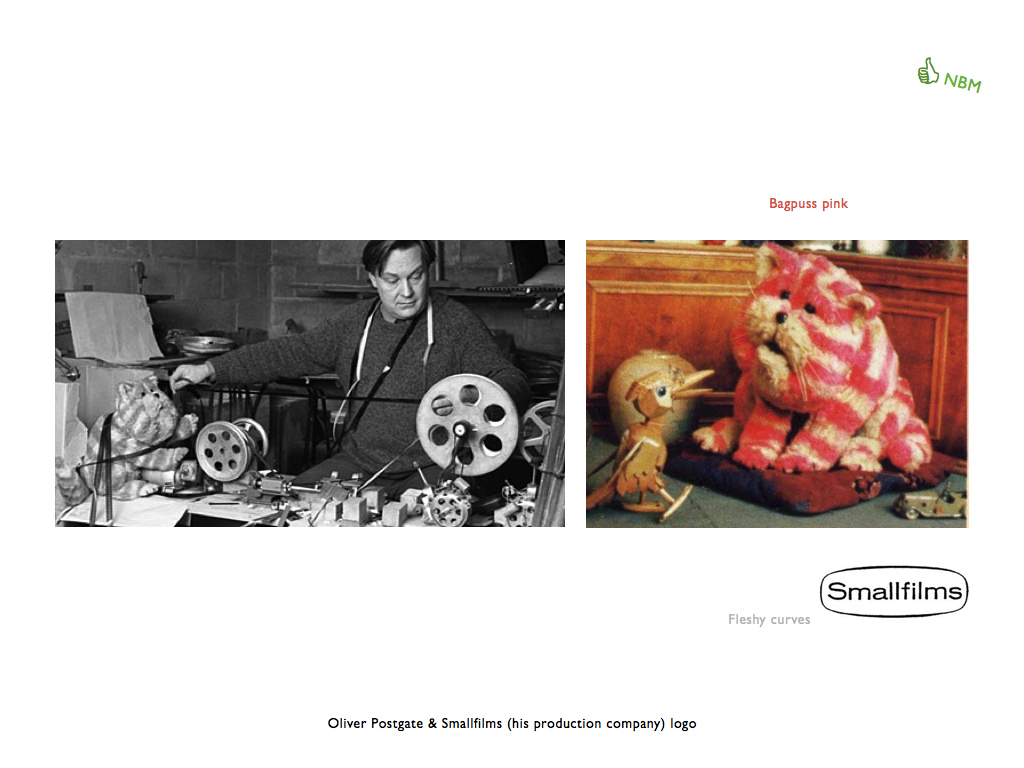
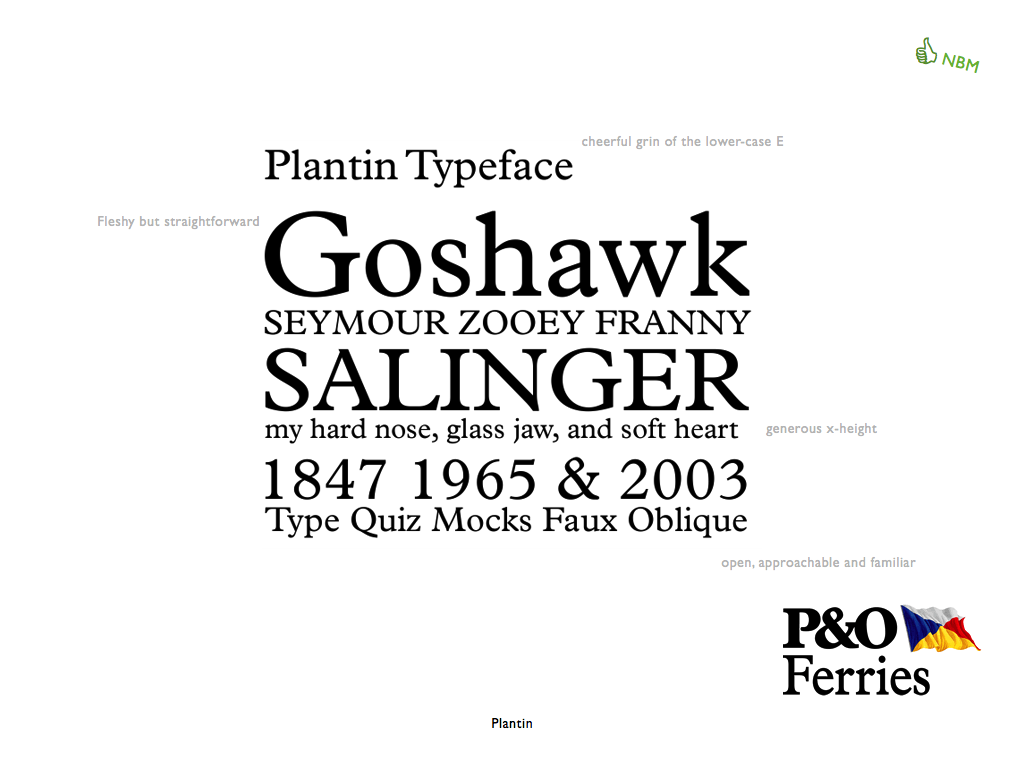
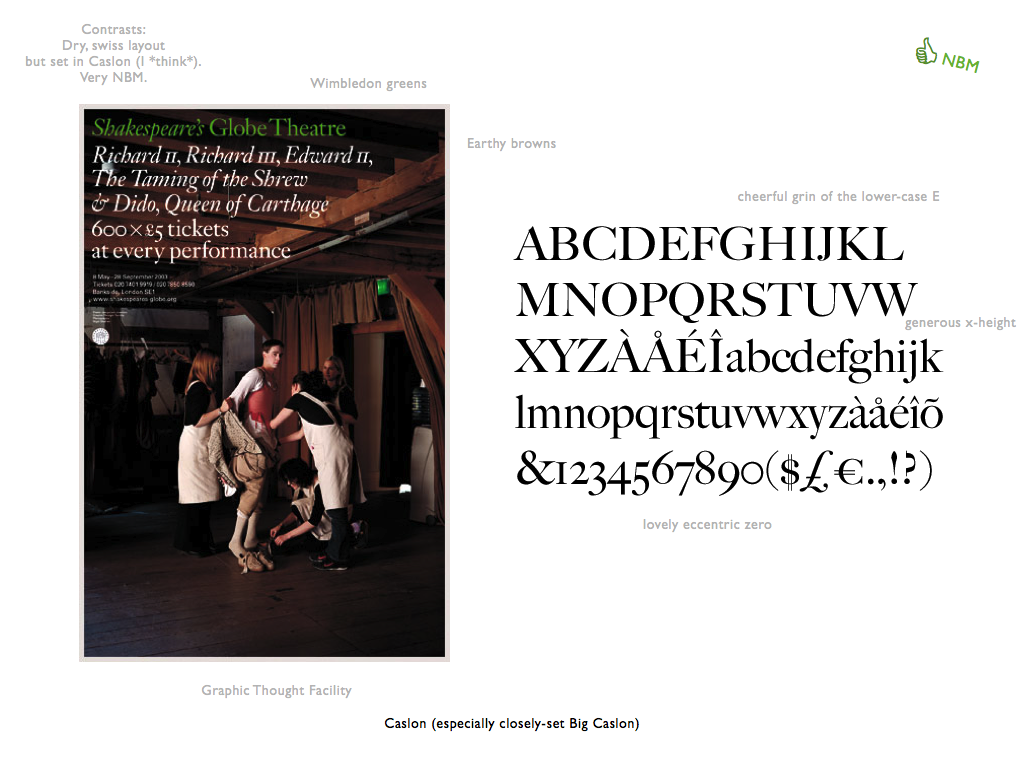
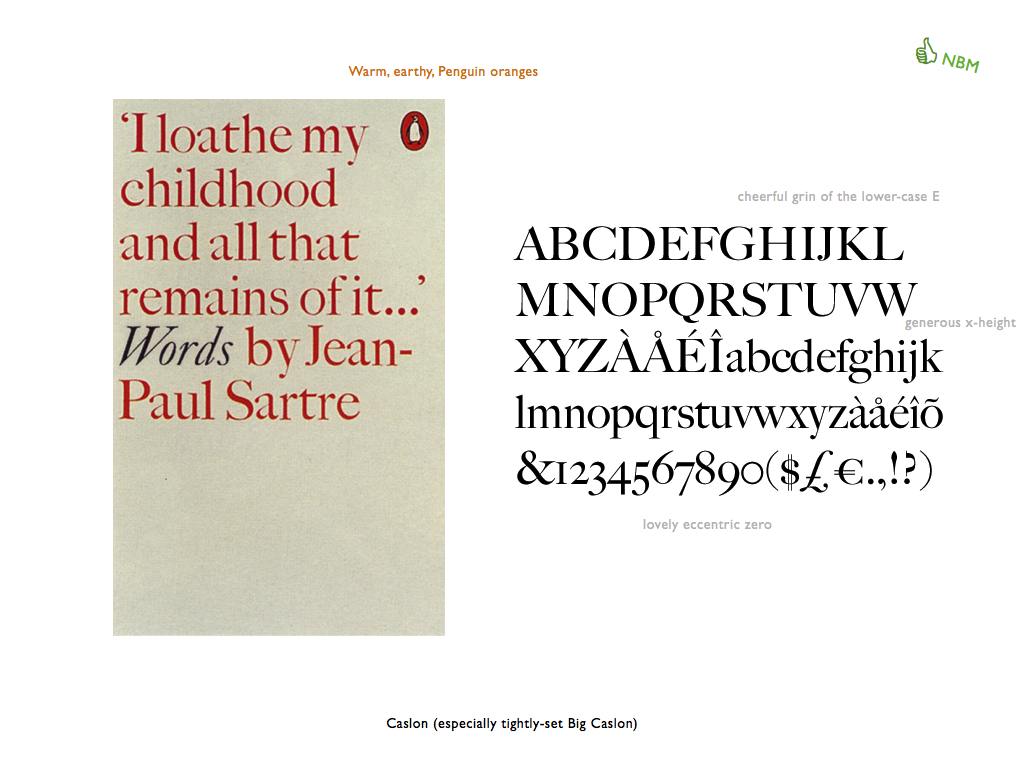
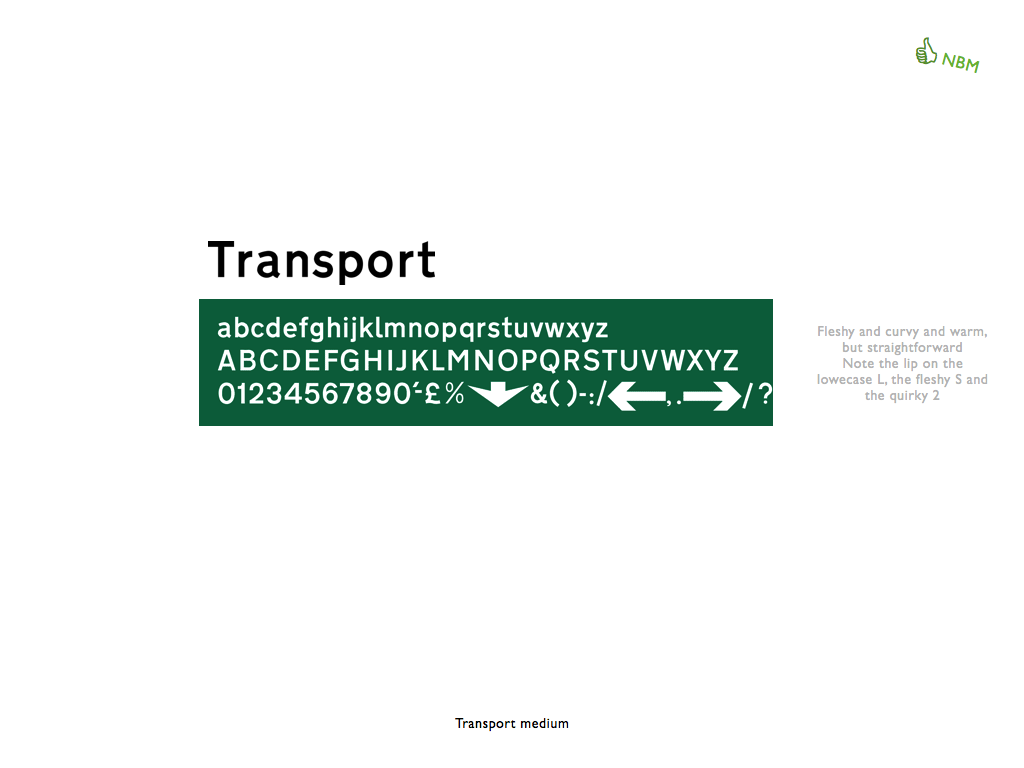
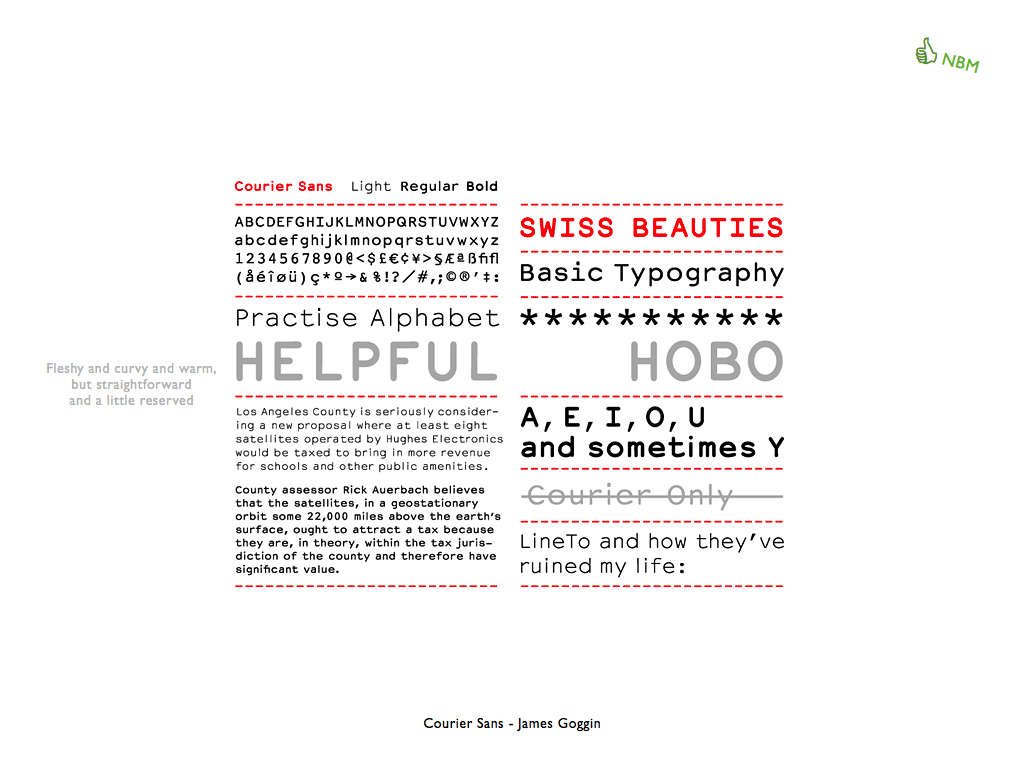
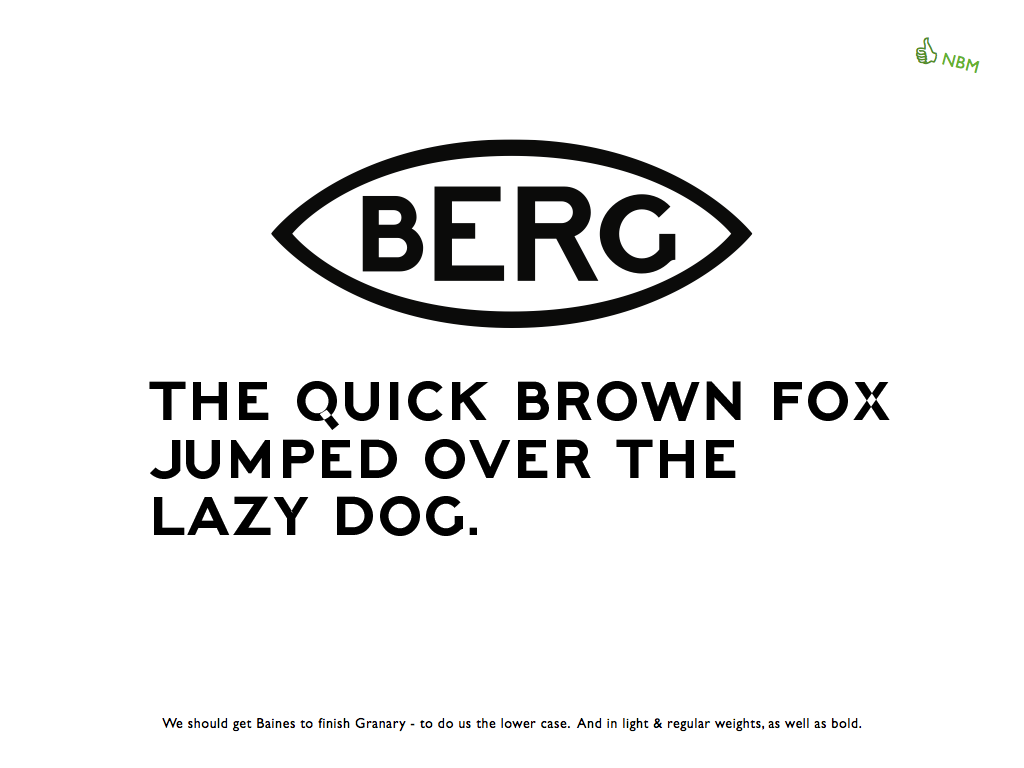
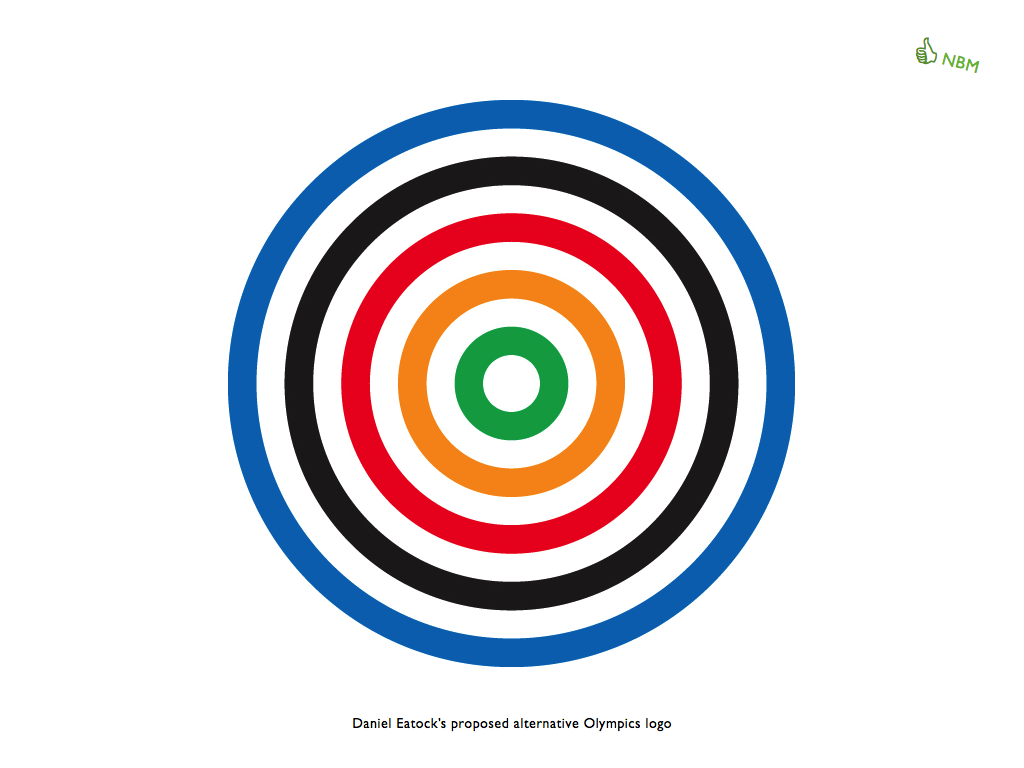
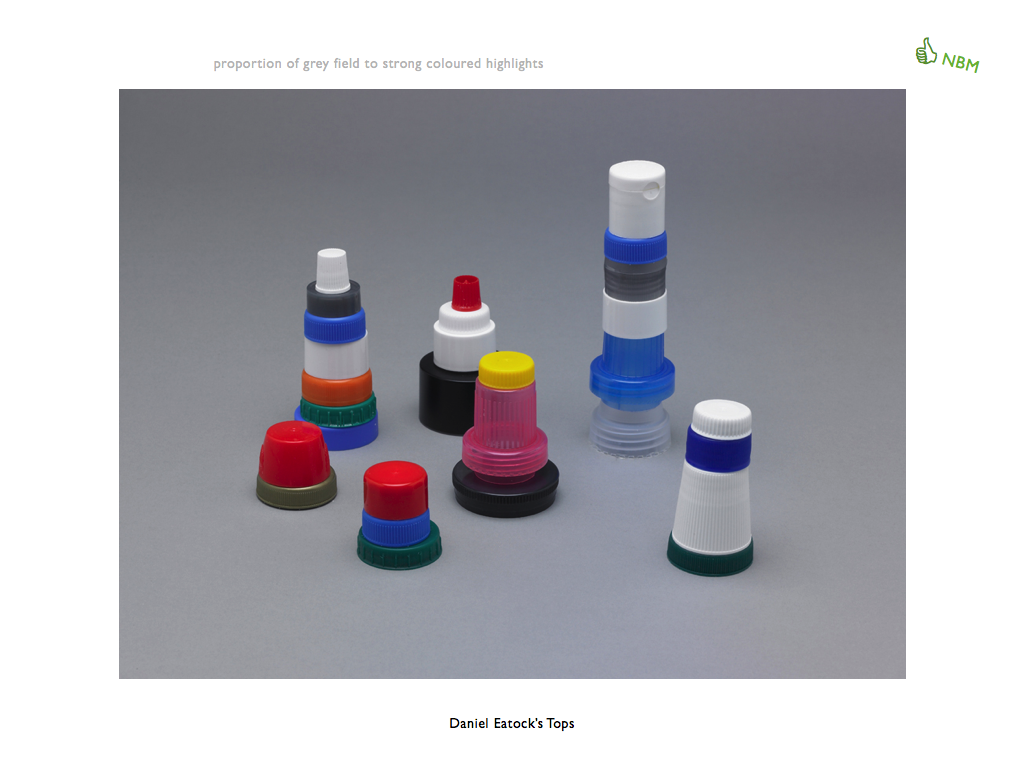
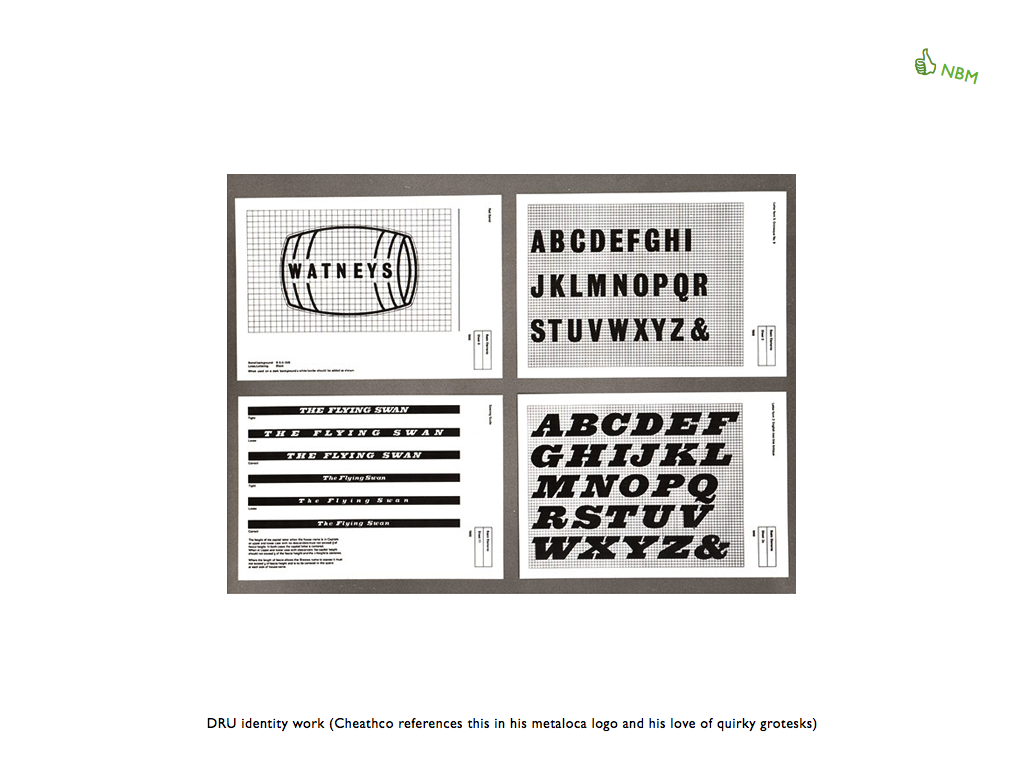
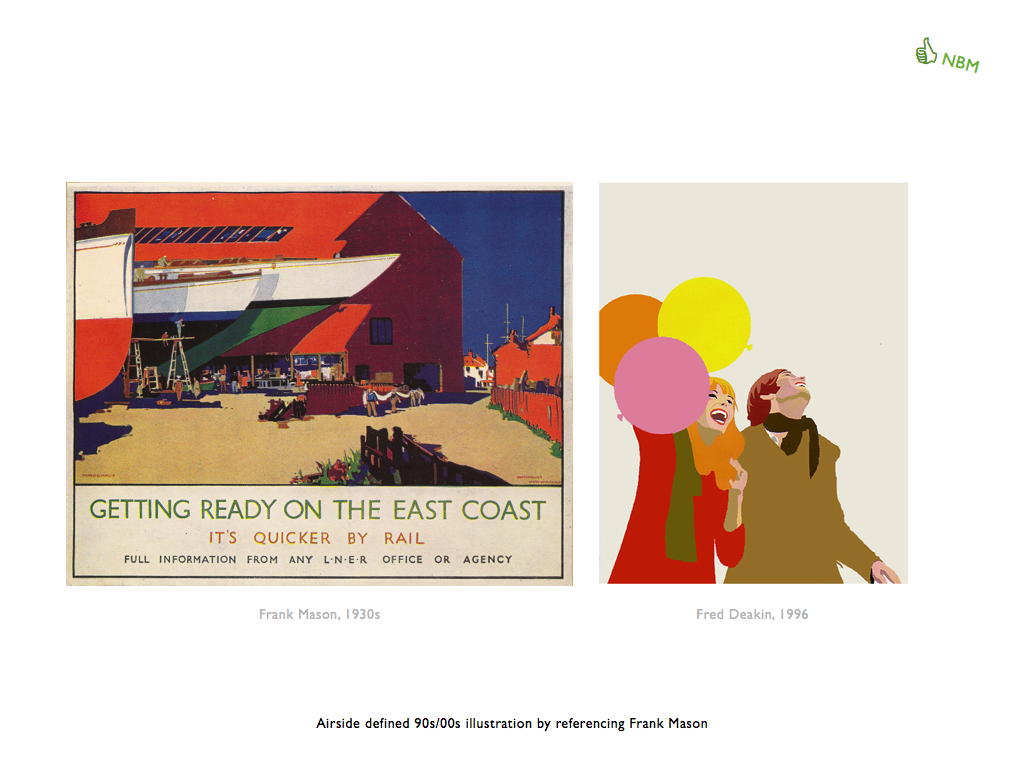
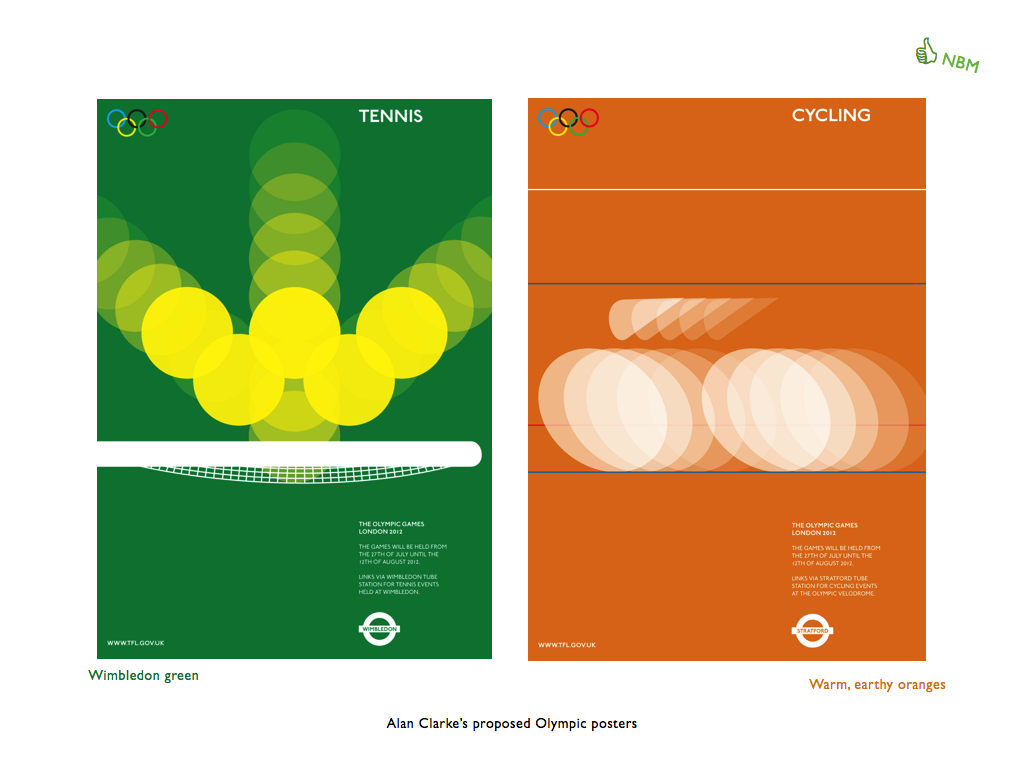
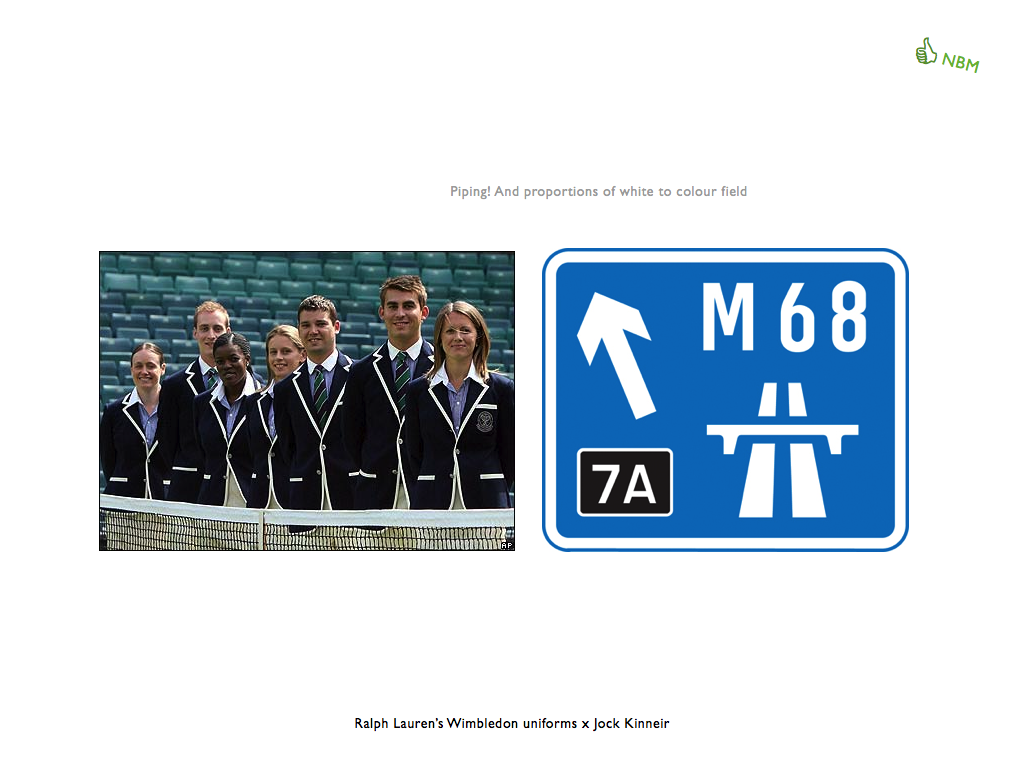
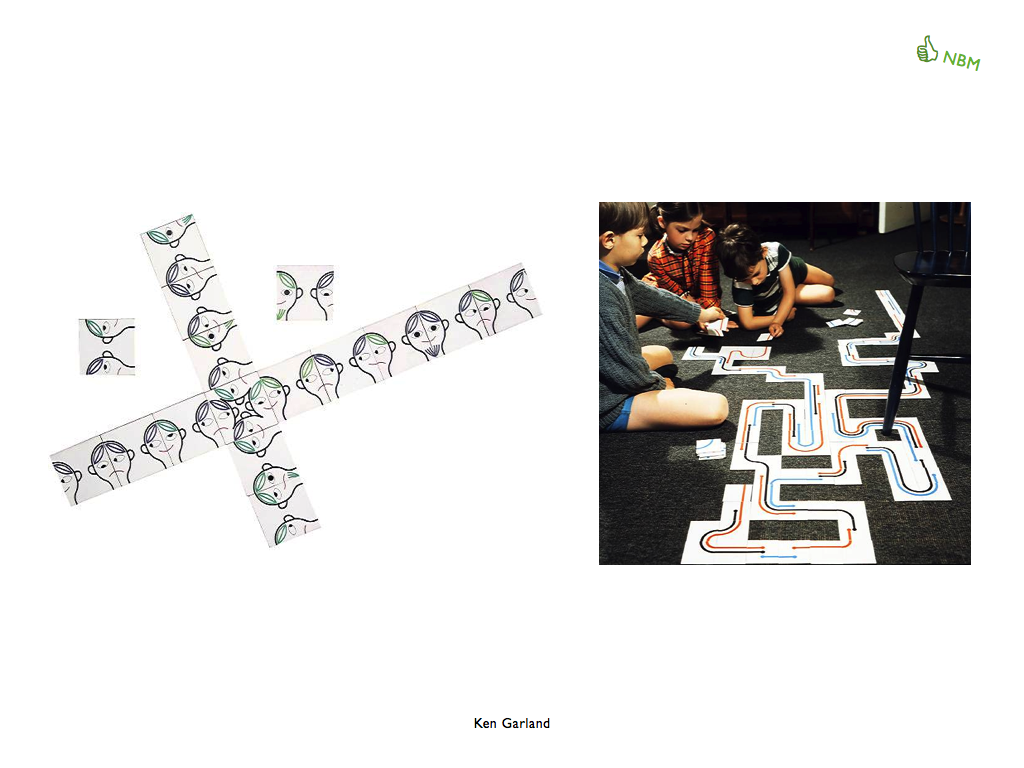
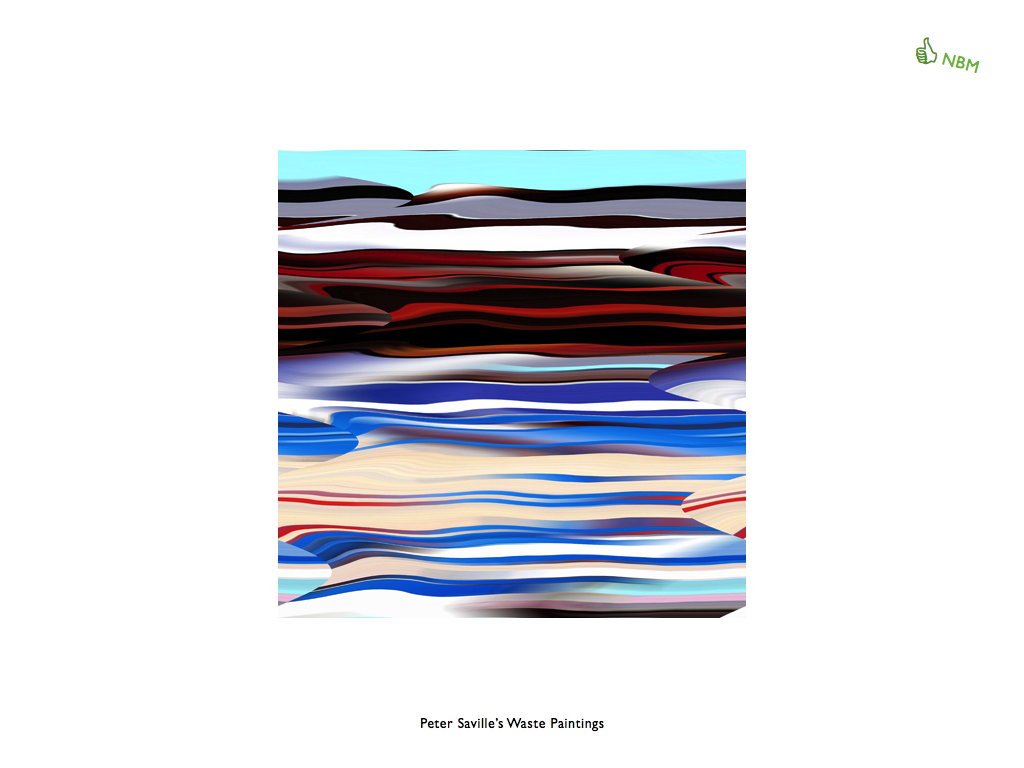
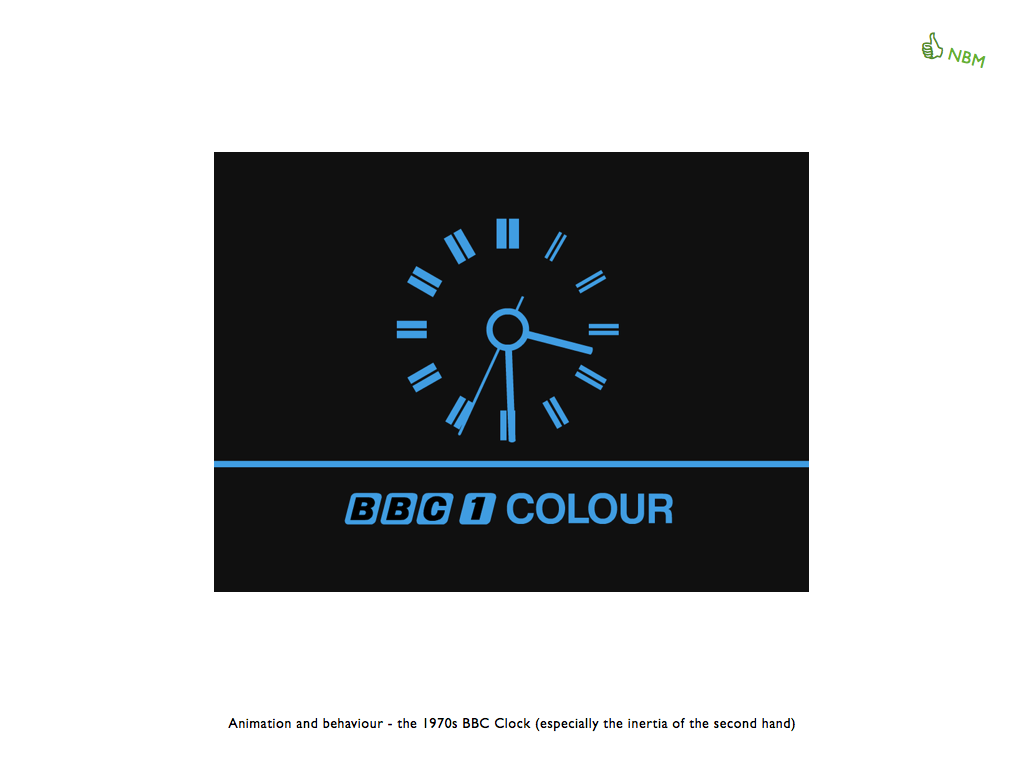
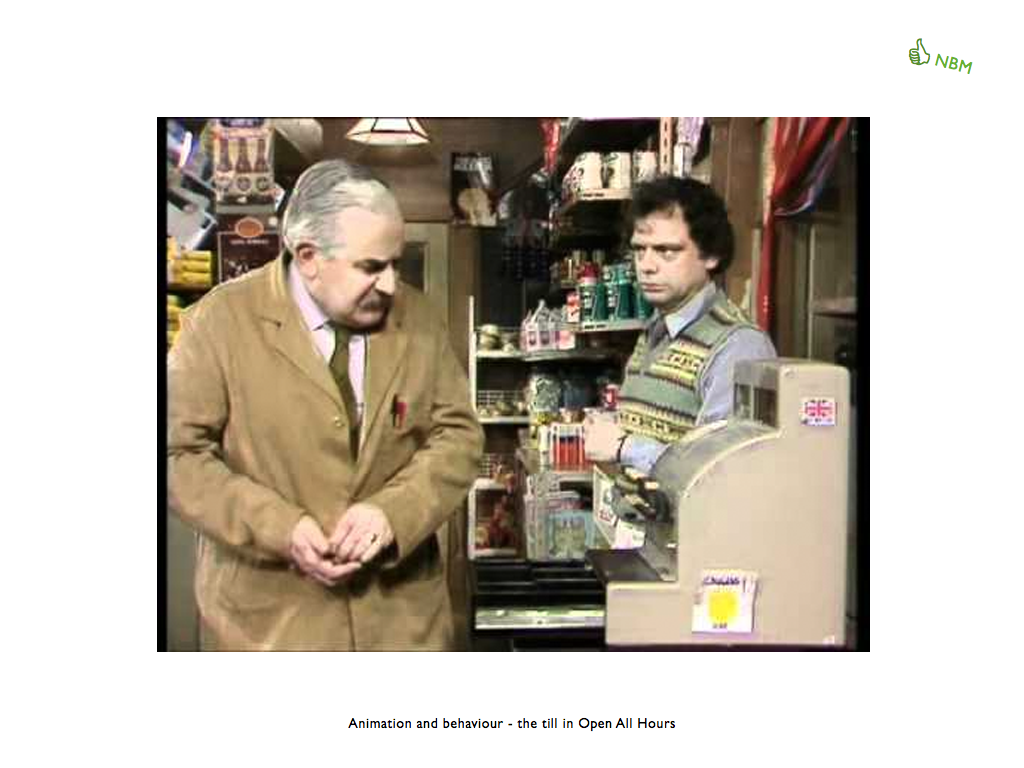
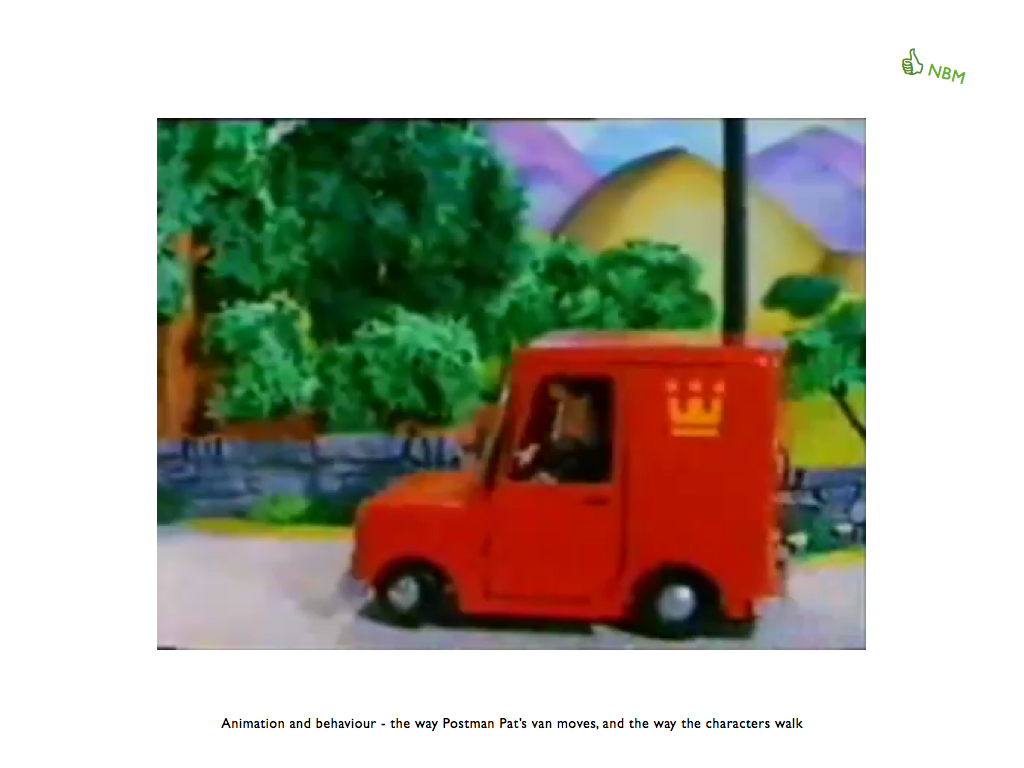
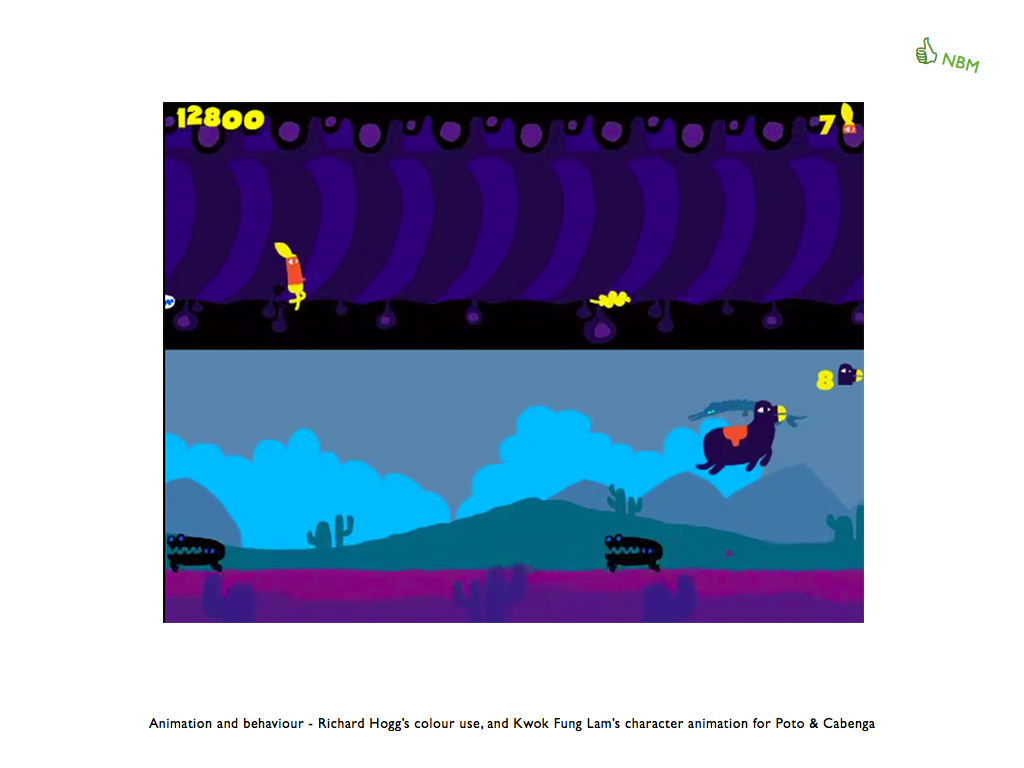
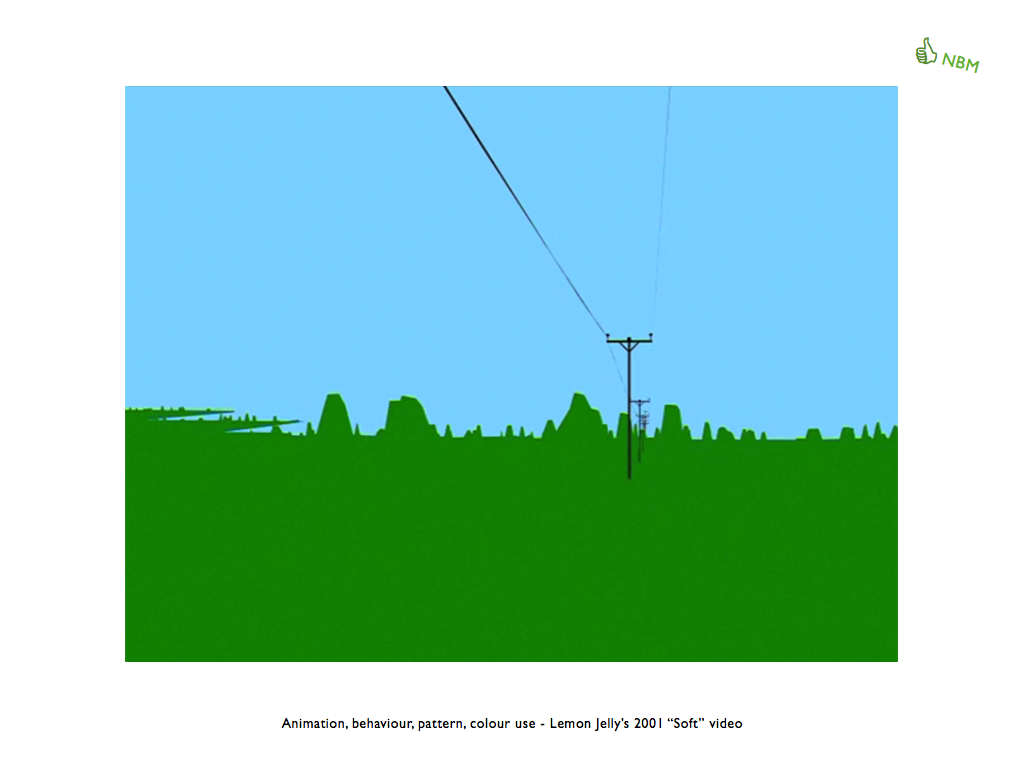
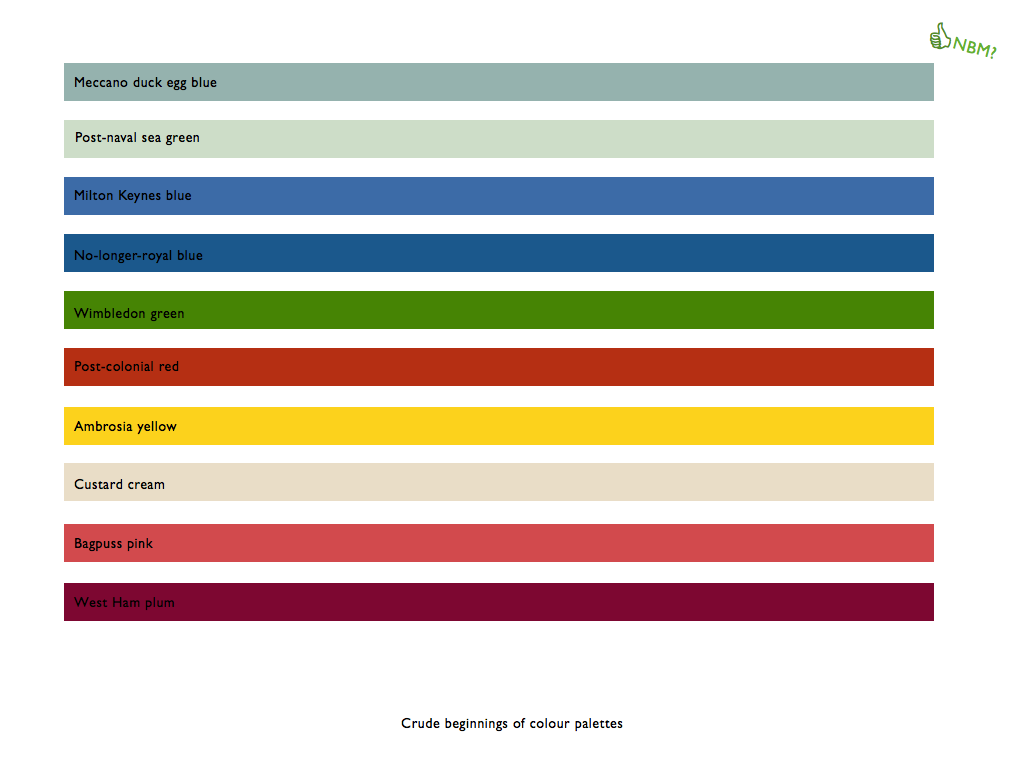
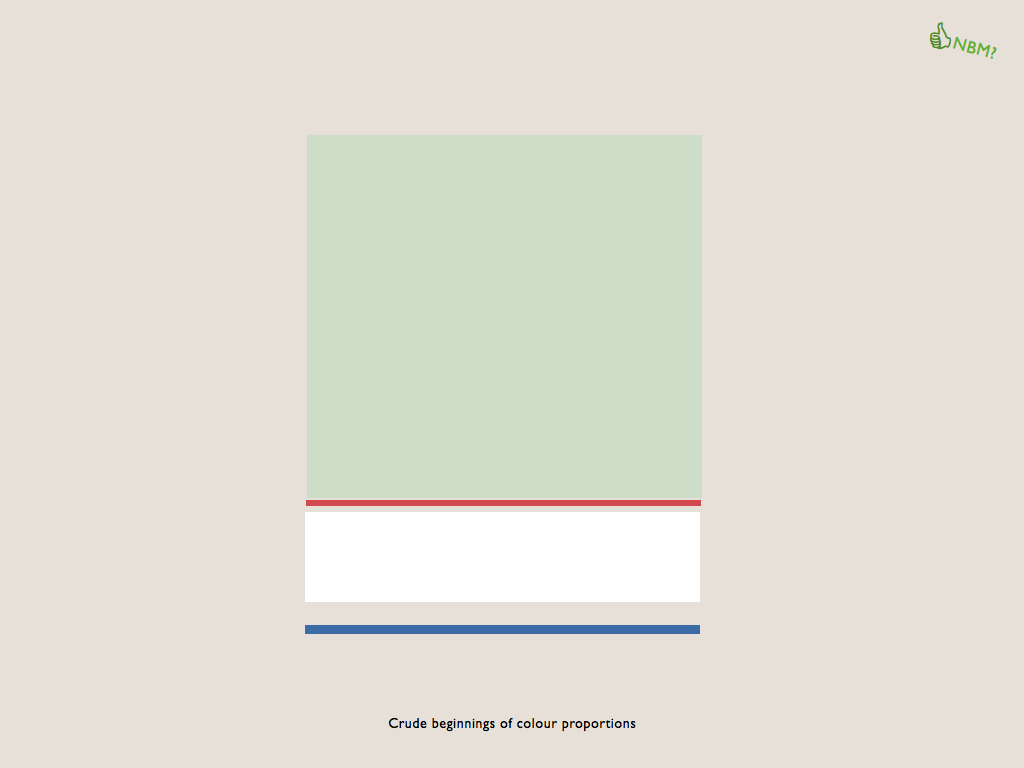
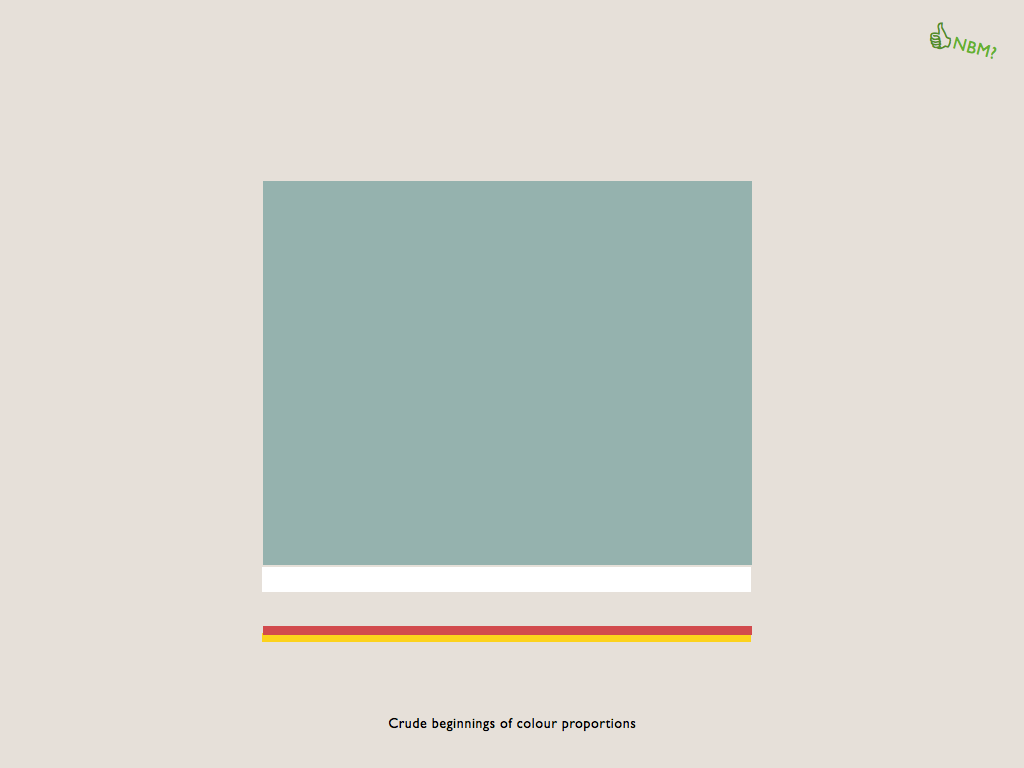
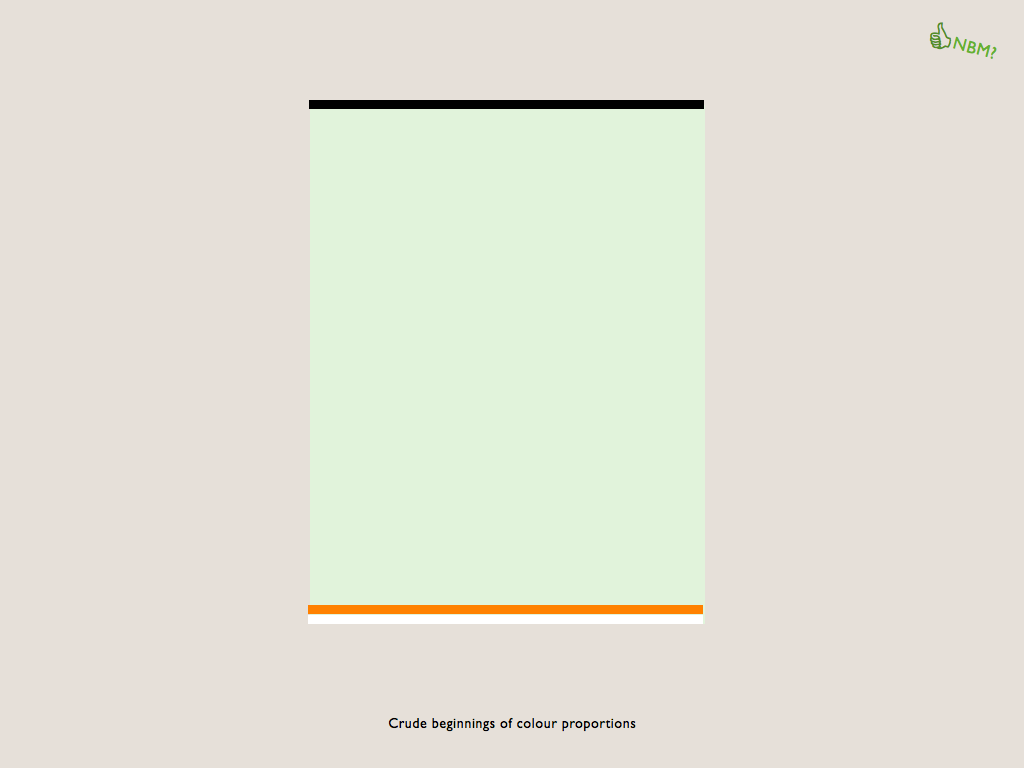
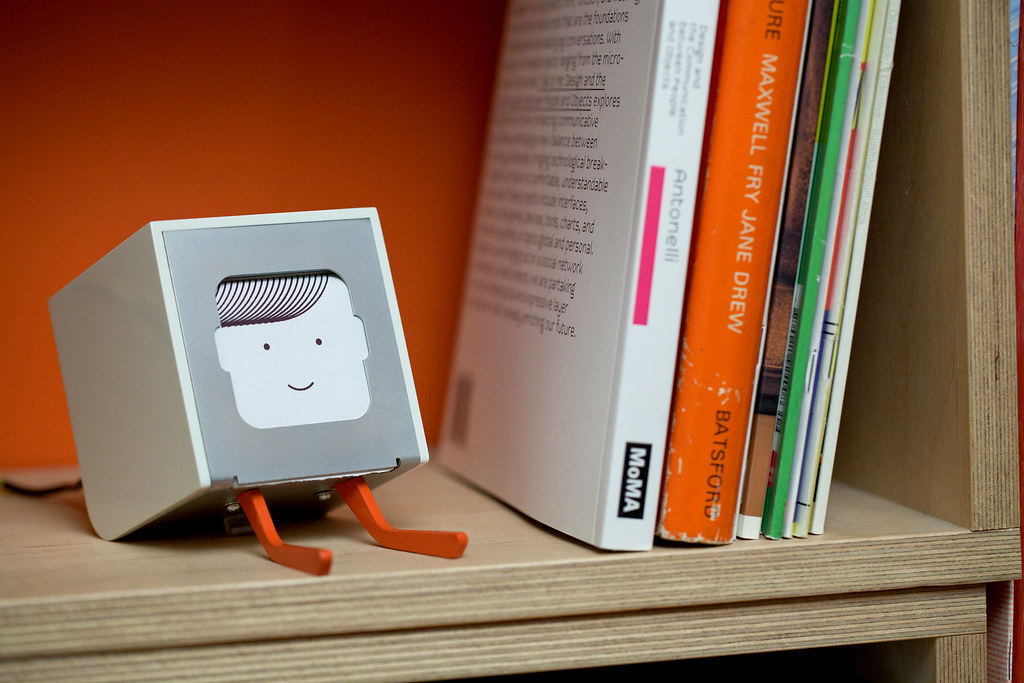
Little Printer shipped about a year after I left Berg for Apple, so there is a huge amount of work I can’t take any credit for. I was gutted to leave just as the project was gathering pace, but really pleased with how well the final product expressed those fragile, half-formed ideas we were nurturing at the start of the project. Massive props to the rest of the Berg crew (you know who you are!) for doing the proper work.
Dan Hill’s description of the Little Printer aesthetic as “Naoto Fukasawa meets Spongebob Squarepants” is a fantastic expression of where we ended up, and one that I continue to aspire to as a working designer.

